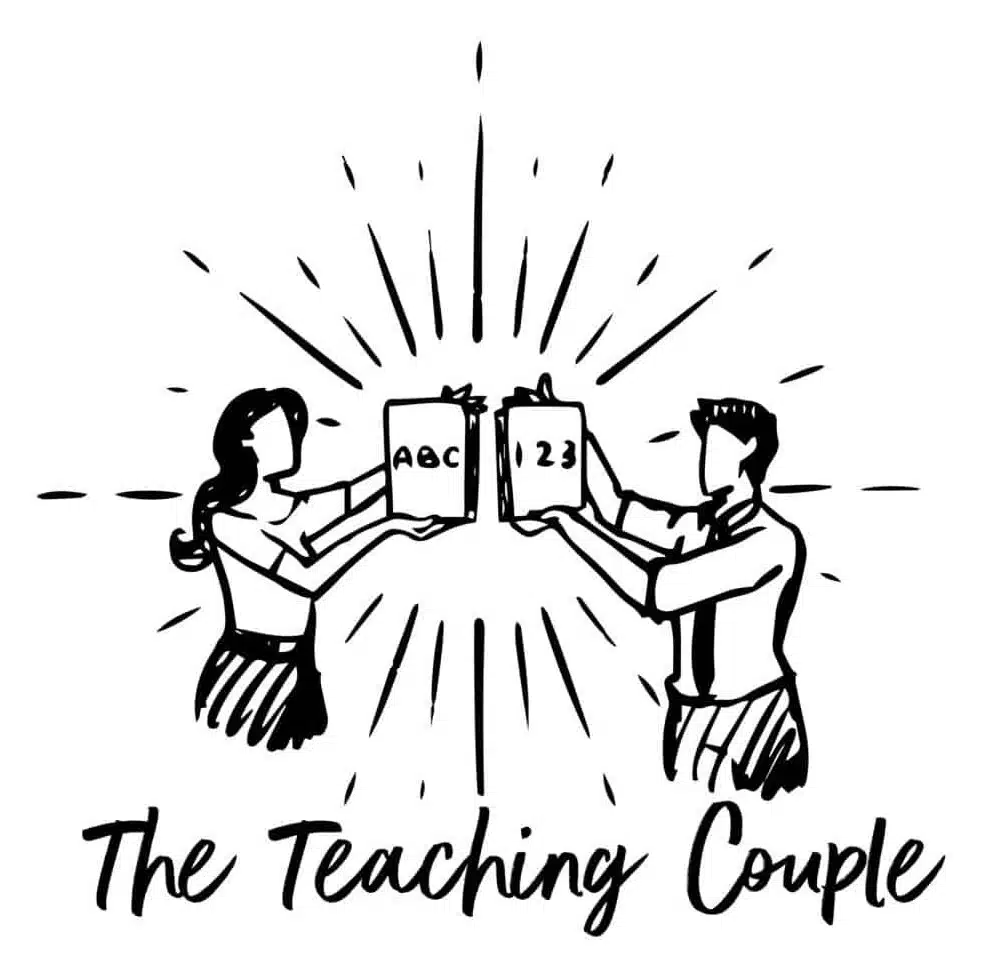

How To Teach Grammar In Primary School
Written by Dan
Last updated February 14, 2024
Are you looking to teach grammar in your primary school classroom? Grammar is essential for all students, from first graders to high school seniors.
Not only does it help them learn the basics of writing, but it also helps build their confidence when speaking and builds a core foundation for reading comprehension skills.
Teaching grammar and syntax can be tricky; luckily, we have compiled a few tips to make teaching grammar more manageable for teachers and students alike! In this article, we’ll look at how to teach grammar in primary school classrooms so that all involved can feel successful in their language studies.
Related : For more, check out our article on Punctuation here.

Table of Contents
What Are The Basics Of Grammar
Teaching grammar to primary school students can be daunting for any teacher; however, understanding the basics and teaching it engagingly can help ensure their pupils have the fundamentals for writing and speaking.
Grammar is an essential part of communication, as it enables us to plan our words so that we are understood correctly.
Teaching basic grammar rules will assist young students in understanding how language works and help them express themselves clearly and effectively in writing and verbally.
The earlier children learn these essential elements of grammar, the better equipped they will be to move on to more advanced topics later on.
| Teaching Strategy | Description | Age Appropriateness | Resources Needed | Expected Outcome |
|---|---|---|---|---|
| Interactive Storytelling | Use storytelling to highlight grammatical structures in context. | 5-7 years | Storybooks, visual aids | Enhances understanding of sentence structure and vocabulary. |
| Grammar Games | Implement games that reinforce parts of speech, punctuation, and sentence construction. | 5-11 years | Board games, flashcards, digital apps | Makes learning grammar fun and engaging, promoting retention. |
| Songs and Rhymes | Teach grammar rules through catchy songs and rhymes that children can remember and recite. | 5-8 years | Audio recordings, lyrics sheets | Aids memorization of rules and patterns in grammar. |
| Sentence Building Activities | Provide students with word cards to construct and rearrange sentences. | 6-11 years | Word cards, sentence strips | Develops syntactic awareness and creativity in sentence formation. |
| Role-Playing and Drama | Encourage children to act out scenes using proper grammar to reinforce spoken language skills. | 7-11 years | Scripts, costumes, props | Improves verbal grammar usage and confidence in speaking. |
| Peer Review and Editing | Pair students to review and edit each other’s work, fostering a collaborative learning environment. | 9-11 years | Writing samples, editing checklists | Teaches students to identify and correct grammatical errors. |
| Grammar Journals | Have students keep a journal where they write daily sentences and apply new grammar concepts. | 7-11 years | Journals, writing prompts | Encourages regular writing practice and application of grammar rules. |
| Visual Aids and Anchor Charts | Use visual aids to summarize and display grammar rules and examples in the classroom. | 5-11 years | Posters, whiteboard, markers | Provides a reference point for students during lessons and activities. |
| Technology Integration | Utilize educational software and online resources to offer interactive grammar exercises. | 6-11 years | Computers, tablets, internet access | Engages students with multimedia content and instant feedback. |
| Contextual Learning | Incorporate grammar lessons into other subjects and everyday situations to show practical usage |
How To Make Grammar Lessons Fun and Engaging
When teaching grammar to primary students, it is essential to make the lessons fun and engaging. Utilise interactive activities such as games, role-playing, and group work to keep students interested.
Implementing technology into the classroom can also be a great way to add an exciting layer of difficulty to learning grammar in a primary school setting.
Competition and rewards for correct answers are also excellent ways of piquing student interest.
Above all else, keep it light and entertaining! Respect your students’ time by spending class time wisely on quickly changing topics, exercises and relatable activities that leave them feeling accomplished and excited about the class.
Create Activities That Reinforce Grammar Concepts
Teaching grammar to primary-age students can be challenging and rewarding, but ensuring engaging and interactive activities is always essential.
Incorporating creative activities is a great way to help children absorb and retain critical grammar concepts in a fun and memorable way.
Whether it’s a story-writing or illustration activity, offering students the freedom to explore their interpretations of the material gives them new insights into how language works.
Instead of simply repeating ideas, try engaging in activities that encourage speaking, reading, writing, and exploring different aspects of grammar—the more creative, the better!
Review Common Grammar Mistakes and Strategies For Correcting Them
Primary school students are likely to make some common grammatical errors , such as confusion between subject-verb agreement and improper use of punctuation.
As a teacher, it can be helpful to review these errors frequently with your students to spot any issues quickly and work with them to help master grammar rules.
Provide examples of the errors and encourage students to identify which corrections need to be made. Additionally, an effective strategy you can use is taking turns dialoguing as different characters while correcting each other’s grammar mistakes .
This will help build their grammar capacity and prepare them for real-life conversations.
| Teaching Strategy | Description | Age Appropriateness | Resources Needed | Expected Outcome |
|---|---|---|---|---|
| Contextual Learning | Incorporate grammar lessons into other subjects and everyday situations to show practical usage. | 5-11 years | Cross-curricular materials, real-life scenarios | Students understand the relevance of grammar in various contexts. |
| Grammar Worksheets | Provide worksheets that focus on specific grammar points for practice and reinforcement. | 6-11 years | Printable worksheets, pencils | Allows for individual practice and assessment of understanding. |
| Mini-Lessons | Teach short, focused lessons on one grammar concept at a time for clarity and depth of understanding. | 5-11 years | Lesson plans, examples on whiteboard | Ensures targeted learning without overwhelming students. |
| Language Games | Use language-based games to reinforce grammar in a playful and dynamic way. | 5-11 years | Board games, online games, mobile apps | Promotes interactive and competitive learning of grammar. |
| Discovery Learning | Encourage students to identify grammar rules through guided discovery rather than direct instruction. | 7-11 years | Text excerpts, discovery worksheets | Fosters critical thinking and inductive learning strategies. |
| Collaborative Writing Projects | Engage students in group writing projects where they apply grammar skills collaboratively. | 8-11 years | Group writing prompts, peer review sheets | Teaches teamwork and the application of grammar in writing. |
| Grammar Quizzes and Tests | Use periodic quizzes and tests to assess students’ grammar knowledge and provide feedback. | 6-11 years | Quiz sheets, online quiz platforms | Measures progress and identifies areas needing improvement. |
| Punctuation Practice | Specifically focus on correct punctuation through targeted exercises and examples. | 5-11 years | Punctuation rules handouts, practice sentences | Helps students understand the role of punctuation in writing clarity. |
| Creative Writing | Allow students to write creatively, using grammar rules in their own stories, poems, or essays. | 7-11 years | Writing prompts, creative writing worksheets | Encourages the practical application of grammar in personal expression. |
| Grammar Wall | Create a dedicated space in the classroom where grammar rules and examples are displayed and updated regularly |
Provide Examples Of How To Apply Grammar Rules To Writing Tasks
As a primary school teacher, helping young learners master the basics of grammar can feel impossible.
A great way to make grammar lessons more engaging is to give students writing tasks that require them to apply what they know about the specific grammar rules.
For example, in a lesson on verb agreement, ask students to write a short story in which all verbs are used in the correct context.
Another example would be when teaching adjectives – have your students create a poem or list of descriptive words for each person in the class.
Through these activities, not only will grammar become more concrete and more accessible to remember, but it will also help them appreciate how language shapes their writing.
The Importance Of Providing Feedback
Providing feedback on students’ written assignments is essential for growth in the English language.
Providing actionable feedback helps to ensure that a student can identify and improve their weaknesses in grammar, spelling and overall structure.
It’s beneficial for educators to create an environment that encourages honest dialogue between teachers and students; this will help foster creativity and ease any fear or anxiety a child may have regarding writing assignments.
Ultimately, by providing constructive feedback, teachers are helping their students become more confident writers, setting them up for success in primary school grammar.
What Aspects of Grammar Are Taught In Primary School?
- Parts of speech : This includes nouns (person, place or thing), verbs (action words), adjectives (describing words) and adverbs (words that describe verbs).
- Sentence structure: Children learn about subjects and predicates in a sentence and how to use punctuation such as full stops, commas and question marks.
- Tenses: They are introduced to past, present and future tenses of verbs.
- Conjunctions are words that connect sentences or clauses such as ‘and’, ‘but’ an ‘or.
- Pronouns: Children learn how to use pronouns such as ‘he’, ‘she’, ‘it’, and ‘they’ correctly in sentences.
- Prepositions: They also learn about prepositions like ‘in’, ‘on’ and ‘under’, which indicate the position of an object about something else.
- Spelling rules: Children are taught common spelling patterns and practices for adding suffixes such as ‘-ing’ or ‘-ed’.
Overall, these aspects help children develop their writing skills and communicate more effectively in written form at an early age.
Teaching grammar in primary school can be a daunting yet rewarding task. By introducing children to the basics of grammar and providing creative activities that reinforce what they have learned, you can help them understand how language works and how to express themselves in writing accurately.

By finding ways to make learning grammar engaging and fun, you can give students the confidence to use the rules they learn in their work.
It’s essential to review common mistakes your students make while providing feedback on their written assignments that explain why they are made and offer solutions for correcting them.
With patience, flexibility and the right approach, teaching grammar at the primary level can benefit and satisfy you and your students.
Q: Why is it important to teach grammar in primary school?
A: Teaching grammar in primary school helps children develop their writing skills and communicate more effectively. It gives them the tools they need to express themselves clearly and confidently.
Q: What are some practical ways to teach grammar to young learners?
A: There are many ways to teach grammar, but some effective methods include using games, visual aids, real-world examples, and explicit instruction. It’s also essential to connect grammar concepts and the student’s experiences.
Q: Should grammar be taught explicitly or implicitly?
A: Both approaches have benefits, but most experts agree that balancing both is ideal. Explicit instruction can help students understand complex concepts more quickly, while implicit education through reading and writing activities can reinforce these concepts over time.
Q: How can teachers make grammar lessons engaging for young learners?
A: Teachers can make grammar lessons engaging by incorporating games, drama, visual aids, and other interactive activities. They can also use literature or real-world scenarios as examples of how grammar is used in everyday life.
Q: At what age should children start learning about grammar?
A: Children can begin learning about basic grammatical concepts as early as preschool or kindergarten. However, formal instruction typically starts in primary school around age 6 or 7.
Related Posts
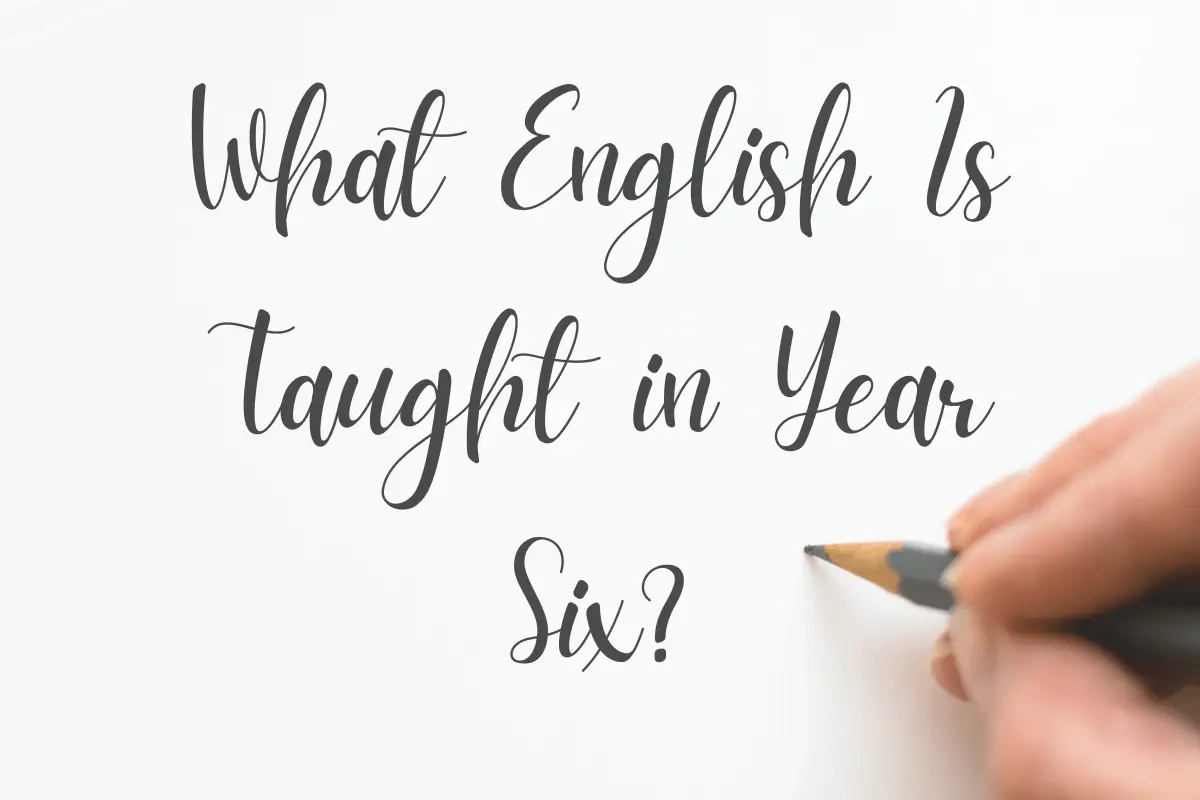
About The Author
I'm Dan Higgins, one of the faces behind The Teaching Couple. With 15 years in the education sector and a decade as a teacher, I've witnessed the highs and lows of school life. Over the years, my passion for supporting fellow teachers and making school more bearable has grown. The Teaching Couple is my platform to share strategies, tips, and insights from my journey. Together, we can shape a better school experience for all.
2 thoughts on “How To Teach Grammar In Primary School”
- Pingback: Spelling Rules Taught In School - The Teaching Couple
- Pingback: What Text Types Should We Teach About in School? - The Teaching Couple
Comments are closed.

Join our email list to receive the latest updates.
Add your form here
Classroom Q&A
With larry ferlazzo.
In this EdWeek blog, an experiment in knowledge-gathering, Ferlazzo will address readers’ questions on classroom management, ELL instruction, lesson planning, and other issues facing teachers. Send your questions to [email protected]. Read more from this blog.
Seven Strategies for Grammar Instruction

- Share article
The new question-of-the-week is:
How should we teach grammar to students?
Our students need to learn grammar, but the real question is how to teach it in ways that don’t bore them out of their minds.
Today, Jeremy Hyler, Sean Ruday, Joy Hamm, and Sarah Golden share their recommendations.
I’d also like to share my favorite grammar-instruction strategy—concept attainment.
In this inductive learning strategy, the teacher places examples, typically (though not always) from unnamed student work, under the categories of “Yes” and “No” and displays them on a document camera.
The teacher starts by covering up the examples and shows them one by one. After students see each new one, they work in pairs to try to determine why some examples are under “Yes” and others under “No” until they identify the “rule.”
The class constructs their own understanding of why the examples are in their categories. It’s a great tool for many lessons, and I like it especially for grammar and other writing.
Here’s an example I used in my English-language learner class to teach about the appropriate placement of adjectives:
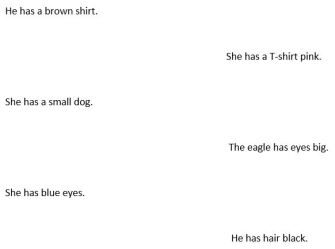
Concept attainment effectively turns instruction into sort of a “puzzle.”
You can see more examples of concept attainment here and here .
Now, it’s time for today’s guests:
Using Social Media
Jeremy Hyler is a middle school English and science teacher in Michigan. He has co-authored Create, Compose, Connect! Reading, Writing, and Learning with Digital Tools (Routledge/Eye on Education), From Texting to Teaching: Grammar Instruction in a Digital Age , as well as Ask, Explore, Write . Jeremy blogs at MiddleWeb . He can be found on Twitter @jeremybballer and at his website jeremyhyler40.com :
The question on how we approach grammar instruction has been debated for over 100 years. The debate has always been whether grammar should be taught in isolation or in context with the reading and writing that is being done in the classroom. Even the National Council of Teachers of English (NCTE) has a position statement on not teaching grammar in isolation.
Let’s be honest, it is impossible to try to shove every grammar skill into our students’ brains. And, yes, that is what often happens as we try to rush through the curriculum we have in front of us. As an educator with over 20 years experience, I don’t know every grammar skill in my heart. We have to begin very simply with two practices: Teach students the difference between formal and informal spaces and show students how the grammar skills they are learning can be applied to their own writing. Students will not see the value in grammar unless we actually show them how it’s applied. Furthermore, as teachers, we need to respect the spaces students write in day to day.
Seven years ago while at a conference, I created a template using Google Slides of the spaces students typically write in from day to day. The template ranges from Facebook to text messaging to Snapchat. I feel in order for students to have a better understanding of grammar skills, they need to know whether the spaces they write in the most are formal or informal. This discussion with students often leads to great conversations and insight about audience and who they are writing for when in a given space. When students are able to grasp how writing might change in these spaces, we then examine the grammar skill such as adjectives and how it is used in a mentor text we are reading at the time.
Students not only need to understand the different writing spaces they themselves write in, but how authors are using grammar and why authors might choose to make certain moves in the books we are reading. Once this is established, students then get to “play” with the mentor sentence and how it might look in the different spaces they write in on a daily basis. The template is a way for teachers to formatively assess student writing, and at the same time, it gives students a way to see how skills could be applied to different writing spaces.
As students grasp the current grammar lesson through the template, I then have them apply the skills to a formal piece of writing in class such as a literary analysis, compare/contrast, or argument paper. While students are writing, I ask them to use the highlight feature in Google Docs, so I can see they have correctly applied the skill they learned to their own writing. Plus, it makes it easier for me as their teacher to grade.
Though what I do takes more time than what most teachers want to take, students do grasp the concepts and retain the skills I am trying to teach them more so than if I were rapidly going through grammar and flooding their backpacks with worksheets. By scaffolding, I am building students toward the reason grammar is important while at the same time respecting the spaces they write in daily.

Five-Step Process
Sean Ruday is an associate professor of English education at Longwood University and a former classroom teacher. He has written 11 books on literacy instruction, all published by Routledge Eye on Education. His website is www.seanruday.weebly.com :
When I conduct workshops for teachers on grammar instruction, I ask participants to begin with a fast write on “teaching grammar.” A theme that often emerges from these responses is the challenge of teaching grammar in ways that are both engaging and effective.
For example, one teacher expressed, “Sure, I know some ways to teach grammar, but I definitely don’t know the best way. I can use textbooks and workbooks, but that doesn’t get any kind of results with my students.” This insightful point is reflected in research on grammar instruction, which has found that out-of-context grammar instruction with no connection to authentic writing often leads to student disengagement (Woltjer, 1998) and has very little impact on student writing (Weaver, 1998).
To address this issue, I use a five-step approach to grammar instruction that uses mentor texts to help students see grammatical concepts as tools that authors purposefully and authentically use to maximize the effectiveness of writing. After students are able to think of grammatical concepts in this way, they can analyze the importance of these concepts in published works, use them strategically in their own writing, and reflect on the impact those concepts had on the effectiveness of their pieces. The steps of the process and their descriptions follow:
1. Discuss the fundamental components of a grammatical concept.
Before students begin thinking about how published authors use a specific grammatical concept and why it is important to effective writing, they must understand the fundamentals of that concept. To facilitate this, I recommend conducting mini lessons with anchor charts and accessible examples to illustrate key attributes of grammatical concepts such as prepositional phrases, subordinate clauses, or specific nouns. Knowledge of these fundamentals will then enable students to think more analytically about grammatical concepts.
2. Show students examples from literature of that concept.
The next step in this process is to show students examples from literature of the grammatical concept you’re discussing. It’s best to select examples from texts that interest your students and are at their general reading levels. This practice is especially effective because it shows students that grammatical concepts don’t just exist in isolated grammar exercises—instead, they are found in literature and are tools published writers use authentically.
3. Talk with students about why the grammatical concept is important to the piece of literature.
This instructional practice is a logical follow-up to the previous one; after you show students examples from literature of a particular grammatical concept, talk with them about why that grammatical concept is important to the pieces of literature. The specific conversation you’ll have about this topic will vary based on the grammatical concept, but each conversation should be based on the same “big idea”: How does the use of this grammatical concept enhance this piece of literature?
4. Work with students as they apply the concept to their own writing.
After students understand why a specific grammatical concept enhances a published text, the next step is to ask them to strategically use that concept in their own writing. To do this, students identify instances in their works where the piece could be enhanced by the concept and use it in those situations; this requires students to approach the concept as a purposefully used tool just as published authors do.
5. Ask students to reflect on the concept’s impact.
Finally, I recommend asking students to reflect on the importance of the focal grammatical concept. To engage students in this kind of reflection, I first ask them to think about how they used the grammatical concept in their own writing. To facilitate this, I ask the students to find an example of the concept in their writing and explain what it does to enhance the piece. After students share their responses with the class, I ask them to reflect on why this concept is an important tool for effective writing.

- Teaching English-Language Learners
Joy Hamm has taught 11 years in a variety of English-language settings, ranging from kindergarten to adult learners. The last few years working with middle and high school Newcomers and completing her M.Ed. in TESOL have fostered stronger advocacy in her district and beyond:
Grammar is best embedded through targeted expressive and receptive practice in the context of content. Begin with formatively assessing students’ prior grammar knowledge by gathering at least three writing samples per student in order to analyze grammar patterns. Often multiple proficiency levels are in the same ESOL class, so target one grammar error largely observed, such as past tense irregular verbs or repetitive sentence structure. Next, provide students with multiple opportunities and modalities to learn and practice the new grammar concept using the four language domains.
For example, your analysis may reveal that your ELs need instruction about conjunctions. First, create an anchor chart of conjunctions as a visual display and begin with a read-aloud mentor text full of conjunctions (visit Jenn Larson’s blog for examples). Pause often to think aloud as students listen and begin to make connections. Display other samples on the board or as tangible sentence strips and get small groups talking about how sentence meaning changes based on the conjunction used, etc. Next, provide guided practice where students combine sentences using modified content-area text examples and share their results with the class. Also, use this interactive time for brief moments of direct instruction as needed.
Once students have lots of receptive exposure to the grammar concept, begin their expressive application through typed writing prompts or peer speaking activities which are related to your content material. Your EQ should emphasize using a variety of conjunctions along with answering the content prompt. (Continue to exhibit the anchor chart of conjunction vocabulary as a scaffold!) Additionally, provide students with ownership by modeling your own writing. Display your PC computer screen and use the Ctrl+F keys to search how many times you used different conjunctions throughout your writing. Discuss with students how you could combine sentences or create new meaning by using a different conjunction from the anchor chart. Finish with students going back to their own writing and using the Ctrl+F keys to revise their own writing.
During speaking practice, have ELs record using speakpipe.com, another free online tool, or their phone. After recording their responses to the EQ content prompt, students will relisten to themselves or another student’s recording and focus on the variety of conjunctions or complex sentences heard. After students evaluate and provide feedback for one another, they will rerecord themselves and send me both recorded links. I always require both because I often grade my ELs on the progress made between the first and second recording. This is also more equitable for multiproficiency levels in one class.

‘Sentence Expansion’
Sarah Golden is currently the coordinator of language arts for the lower and middle school divisions at The Windward School ’s Manhattan campus. She is on the faculty of The Windward Institute and presents the workshop Expository Writing Instruction: Part Two – Grades 4-9:
Grammar should be taught to students in context using specific sentence activities such as sentence combining and expansion. I have found this to be most effective in my own practice teaching students of all ages, and it is also supported by research. Utilizing the direct (explicit) teaching model, a specific grammatical concept should first be taught and modeled by the teacher, in the context of a specific sentence activity. This is most effective when done in a whole-class lesson that promotes a high level of student participation. Then, students should practice the newly learned concept, so they may reach mastery and generalization of the skill. With plenty of guided practice at the sentence level, students will ultimately begin to incorporate the learned structures and concepts into their independent writing.
Very young students could begin learning basic sentence structure, sentence boundaries, and the components of a sentence by engaging in oral or written activities that require them to identify sentences and fragments. When students identify fragments, they must always be required to change the fragments into a sentence (MacDermott-Duffy, 2018). As students move up through the grades, this activity can be used to teach other grammatical structures such as dependent clauses.
Another way to introduce students to or reinforce grammatical concepts used in writing is through a strategy, which in the Windward Expository Writing Program (MacDermott-Duffy, 2018) is called sentence expansion . In this strategy, students are provided with a short unelaborated sentence and prompted, using question words, to add words, phrases, or clauses to the given simple sentence. This enables students to learn and practice skills like appropriate pronoun use, adverbial clauses, and the use of appositive phrases or relative clauses. Additionally, students can practice different sentence structures if they are prompted to start with, for instance, the subordinating clause or information generated by a specific question word.
A third strategy, and one which is particularly effective and strongly supported by research (Saddler, 2007 as cited in MacDermott-Duffy 2018), is sentence combining. In this strategy, students combine simple sentences into more complex, and therefore longer, sentences using a variety of strategies that help students learn grammatical concepts including punctuation, tense and number agreement, parts of speech, coordinating and subordinating conjunctions, and relative clauses (MacDermott-Duffy, 2018; Scott, C. et al., 2006 as cited in MacDermott-Duffy, 2018).

Thanks to Jeremy, Sean, Joy, and Sarah for their contributions!
Please feel free to leave a comment with your reactions to the topic or directly to anything that has been said in this post.
Consider contributing a question to be answered in a future post. You can send one to me at [email protected] . When you send it in, let me know if I can use your real name if it’s selected or if you’d prefer remaining anonymous and have a pseudonym in mind.
You can also contact me on Twitter at @Larryferlazzo .
Education Week has published a collection of posts from this blog, along with new material, in an e-book form. It’s titled Classroom Management Q&As: Expert Strategies for Teaching .
Just a reminder; you can subscribe and receive updates from this blog via email (The RSS feed for this blog, and for all Ed Week articles, has been changed by the new redesign—new ones are not yet available). And if you missed any of the highlights from the first nine years of this blog, you can see a categorized list below.
- This Year’s Most Popular Q&A Posts
- Race & Racism in Schools
- School Closures & the Coronavirus Crisis
- Classroom-Management Advice
- Best Ways to Begin the School Year
- Best Ways to End the School Year
- Student Motivation & Social-Emotional Learning
- Implementing the Common Core
- Facing Gender Challenges in Education
- Teaching Social Studies
- Cooperative & Collaborative Learning
- Using Tech in the Classroom
- Student Voices
- Parent Engagement in Schools
- Reading Instruction
- Writing Instruction
- Education Policy Issues
- Differentiating Instruction
- Math Instruction
- Science Instruction
- Advice for New Teachers
- Author Interviews
- Entering the Teaching Profession
- The Inclusive Classroom
- Learning & the Brain
- Administrator Leadership
- Teacher Leadership
- Relationships in Schools
- Professional Development
- Instructional Strategies
- Best of Classroom Q&A
- Professional Collaboration
- Classroom Organization
- Mistakes in Education
- Project-Based Learning
I am also creating a Twitter list including all contributors to this column .
The opinions expressed in Classroom Q&A With Larry Ferlazzo are strictly those of the author(s) and do not reflect the opinions or endorsement of Editorial Projects in Education, or any of its publications.
Sign Up for EdWeek Update
Edweek top school jobs.

Sign Up & Sign In

Breadcrumbs Section. Click here to navigate to respective pages.

Understanding and Teaching Grammar in the Primary Classroom
DOI link for Understanding and Teaching Grammar in the Primary Classroom
Get Citation
Understanding and Teaching Grammar in the Primary Classroom is a practical guide for trainee and practising teachers, with language, and the way we use it to think and communicate, at its heart. Built on a foundation of how powerful, beautiful and thought-provoking language is, this book uses our intuitions about words and language to form a picture of how grammar works, and how even very young children are masters of its patterns.
Each chapter builds from fundamental concepts up to the fine details, providing an introduction to developing grammatical subject knowledge, alongside explanations of key ideas and vocabulary, including:
• Generality – a look at the general structures of sentences that allow us to learn a language at all
• Specifics – a look at the words and modifications that allow us to use this universal tool to pinpoint the specifics of our thoughts and the world around us
• Relationships – looking at how sentences behave in relation to one another, and how they can be merged in such a way that we can show cause and effect in the world
• Humans – focusing on some of the details and idiosyncrasies we are able to give our language
• Language games – examples of language typical of children, and methods to pull this apart and understand how it works.
At its core is the idea that as our language grows, so our understanding grows; grammar is not the study of what to say and how to say it, but of what it is possible to think, feel and express in words.
Illustrated throughout with practical lesson ideas, helpful tips and easy-to-use classroom strategies , Understanding and Teaching Grammar in the Primary Classroom is a must-read guide for all trainee and practising primary teachers.
TABLE OF CONTENTS
Chapter | 12 pages, introduction – the grammar paradox, part | 2 pages, part i generality, chapter 1 | 3 pages, voice and power, chapter 2 | 9 pages, ping pung – the importance of noticing, chapter 3 | 7 pages, the beating heart – an introduction to verbs, chapter 4 | 10 pages, a game of two halves – subject and predicate, chapter 5 | 7 pages, do-be-do-be-do, chapter 6 | 6 pages, beginnings and endings – basic punctuation, chapter | 4 pages, the story so far – generality, part | 4 pages, part ii being specific, chapter 7 | 11 pages, time and tense, chapter 8 | 7 pages, modifying the verb, chapter 9 | 9 pages, noun phrases, chapter 10 | 8 pages, the sort of pedantry, chapter | 3 pages, the story so far – being specific, part iii relationships, clauses and commas, chapter 11 | 8 pages, chapter 12 | 9 pages, subordinate clauses, chapter 13 | 5 pages, relative clauses, chapter 14 | 7 pages, the story so far – relationships, clauses and commas, part iv humans, chapter 15 | 5 pages, chapter 16 | 5 pages, chapter 17 | 4 pages, probability, possibility and persuasion, chapter 18 | 6 pages, chapter 19 | 5 pages, responsibility and blame, chapter 20 | 8 pages, the story so far – humans, part v words, words, words, chapter 21 | 7 pages, chapter 22 | 7 pages, slang and speech, chapter 23 | 6 pages, words about words, chapter 24 | 4 pages.
- Privacy Policy
- Terms & Conditions
- Cookie Policy
- Taylor & Francis Online
- Taylor & Francis Group
- Students/Researchers
- Librarians/Institutions
Connect with us
Registered in England & Wales No. 3099067 5 Howick Place | London | SW1P 1WG © 2024 Informa UK Limited
- Teach Early Years
- Teach Primary
- Teach Secondary
- New for Schools
Home > Learning Resources
Teaching primary grammar in context
- Author: Adam Stower
- Main Subject: CPD
- Subject: Literacy
- Date Posted: 03 October 2014
Share this:
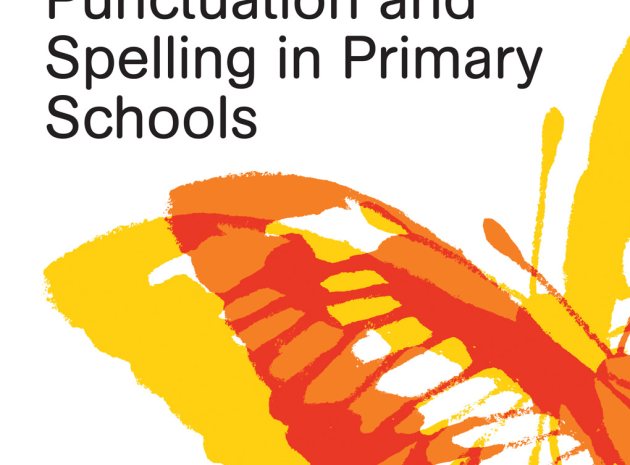
When teaching grammar, we need to make children alert to the infinite possibilities of the English language – mechanistic tips and tricks are of little use, say David Waugh, Claire Warner and Rosemary Waugh..
What comes into your mind when you hear the word ‘grammar’? Word classes and technical language perhaps? A set of perplexing rules that need to be followed but seem to be designed to catch you out? Or maybe a creeping anxiety that your subject knowledge may need a little updating to cope with the expectations of the 2014 curriculum and the end of KS2 tests?
There is no doubt that the term can be off-putting, even though as experienced and effective users of language we have a strong, implicit knowledge of grammar. As the 2014 National Curriculum states: “The grammar of our first language is learnt naturally and implicitly through interactions with other speakers and from reading.”
Every context in which language is used has its own conventions, but we effortlessly choose and manipulate language to make our speech and writing appropriate for the many different purposes and audiences we encounter. We do this almost unconsciously, switching freely from the informal free-flowing conversation we use when talking with friends over a drink at the weekend, to the more formal conversation with senior colleagues at work. The way we write end-of-year reports – the precise vocabulary we use, the way we construct our sentences and the tone of our writing – will be quite different from the way we text, although punctuating reports with a range of emoticons might make them rather more interesting!
There is general agreement that enabling children to use language in flexible and responsive ways should be an integral part of our role as teachers. Being able to move in and out of different genres confidently and accurately is a key characteristic of successful language users. But what does all this have to do with the teaching of grammar? The answer is that it depends: if we have in mind de-contextualised exercises and formal teaching, then probably very little. Take the example below. You need to fill in the gaps and there are no right answers.
Tara chose a _____ blouse and a _______ skirt. It isn’t difficult to find words to fit into the spaces. You could happily (or perhaps tediously) complete 20 such sentences. Underlining pronouns, circling adverbs and inserting subordinating conjunctions may possibly have merit for Spelling, Grammar and Punctuation test preparation, but making grammar the focus of study in this way has little intrinsic value. Completing the exercise above would be scant help for understanding and remembering the function of adjectives, or knowing that we need to use adjectives judiciously and precisely. Grammar spotting won’t help children develop the wardrobe of voices they need to communicate in a range of situations (The literate classroom, Lockwood, 2010), or have a positive influence on the quality of their writing.
So where does this leave us? If children have an implicit knowledge of grammar, and formal exercises are almost meaningless, is the only purpose of teaching grammar to fulfil our statutory obligation and to prepare children to pass the Spelling, Grammar and Punctuation test? There is, fortunately, an alternative viewpoint. David Crystal’s explanation may help to provide a way forward. He writes: “Grammar is what gives sense to language. Sentences make words yield up meanings. Sentences actively create sense in language and the business of the study of sentences is the study of grammar,” (Discover Grammar, 1996, Longman).
Myhill, Lines and Watson (Making Meaning with Grammar, Metaphor, 2011) persuasively argue that studying how language works can make children more alert to the infinite possibilities of the English language, allow them to evaluate others’ language use, and be in a better position to use it for themselves. They suggest that: “…a writing curriculum which draws attention to the grammar of writing in an embedded and purposeful way at relevant points in the learning is a more positive way forward. In this way, young writers are introduced to what we have called ‘a repertoire of infinite possibilities’, explicitly showing them how different ways of shaping sentences or texts, and how different choices of words can generate different possibilities for meaning-making”.
Their research provides good evidence that children can develop a knowledge and understanding about language that impacts on their writing when it is taught through meaningful activities. The even better news is that the annex of the 2014 curriculum recognises this, stating: “Explicit knowledge of grammar is, however, very important, as it gives us more conscious control and choice in our language. Building this knowledge is best achieved through a focus on grammar within the teaching of reading, writing and speaking.”
Here are some thoughts to consider as you review your own teaching of grammar.
Be systematic and focused
Grammar learning is cumulative. Make sure you know what the children you are working with have already learned and what they need to learn now, so that you can link new learning with their prior knowledge. Think specifically about the elements of grammar that will help children become more effective writers of the text type you are focusing on, and narrow the focus of your teaching of grammar accordingly. There is no point asking children to practise their use of complex sentences just for the sake of it or when you are writing Haiku.
Explain through examples
Identify examples of the particular grammatical feature you are focusing on in the high quality texts you are reading with the class, and draw children’s attention to these during shared and guided reading. Make sure you have identified examples beforehand and can talk about them using the correct terms, so that you build up a shared meta-language. Be as clear as you can. For example, we often call adjectives describing words, but this can be unhelpful – words such as cautiously and gently are also descriptive but are of course adverbs. It may be better to say that adjectives give more information about the noun.
Focus on meaning and impact
Make strong links between the grammar being introduced and how it might enhance the writing being tackled. Allow plenty of time for children to imitate and experiment for themselves, taking care not to imply one ‘correct’ way of writing. If you are focusing on modal verbs for example, try using them in relation to a current sporting event. What difference would it make if Alistair Cook said we should/could/may/will/ win to England’s cricket team? Perhaps very little given the five-match defeat in the recent Ashes series, but this kind of approach can encourage critical conversations. This can (or should that be will?) help to strengthen the children’s self-awareness and meta-cognition.
We can be confident then, that our role as teachers of grammar is not simply to correct mistakes in children’s work, nor is it to pass on tricks and techniques to be replicated in a mechanistic way. It is to make visible what experienced language producers know and do; to help children to control grammar to express increasingly complex ideas; and to extend the range of choices open to them as speakers and writers. It does not need to be dull. It can involve investigation, problem-solving, language play and drama. Taught well, it will not only allow your children to understand more about language and how it works, but will also encourage them to make effective choices from their growing ‘repertoire of possibilities’ (Myhill, Lines, and Watson, 2011, p.3).
David Waugh, Claire Warner and Rosemary Waugh are the authors of Teaching Grammar, Punctuation and Spelling in Primary Schools (SAGE Publications 2013), which provides teachers with the subject knowledge and ideas to teach grammar, punctuation and spelling in a way that sparks children’s interest.
About the authors
David Waugh is director of PGCE at Durham University. Claire Warner was senior adviser for literacy with the National Strategies and is currently an education consultant for Primary English. Rosemary Waugh is a linguist and classics teacher at Queen Margaret’s School, York.
You may also be interested in...
- Download your free digital copy of the brand new January issue of Teach Primary now
- Teach Primary Awards 2019 Finalists Announced
- Oxford University Press celebrate double victory
- Free resources for teaching film in primary schools
- National Curriculum Key Stage 2 assessments reveal increased attainment in primaries
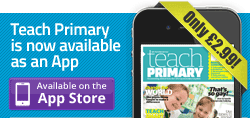
Subscribe to Our Newsletter
I agree to the Terms & Conditions and Privacy & Cookies Policy.
Tried & Tested

Power Maths – A Child-Centred, ‘Can-Do’ Mastery Teaching Programme for KS1 and KS2
Category: Maths

Fit To Dance Schools From Disney On Ice
Category: Other

‘S!ng Sensational’ And ‘A King Is Born’ – Two Fun New Musical Masterpieces That Children Will Love
Category: Music

Product review: Schofield & Sims Fractions, Decimals & Percentages
See all Tried & Tested products
Recommended for you...

Top tips for differentiation

We Need Subject Specialists

How to win parents over on open day

The five key practices every good primary science teacher should know
Follow us on Twitter @teachprimary :
Share teach primary:.
Home | Tried & Tested | Interactive | Book Reviews | Resources | News | Hot Products | Advertising Contact Us | Primary Resources | Primary Teaching Resources | Privacy Policy

Copyright 2024 Artichoke Media Ltd
Registered in England and Wales No 14769147 | Registered Office Address: Jubilee House, 92 Lincoln Road, Peterborough, PE1 2SN


- Math for Kids
- Parenting Resources
- ELA for Kids
- Teaching Resources

Who Invented Math? History, Facts & More
How to Teach Number Recognition to Kids in 8 Easy Steps
How to Teach One to One Correspondence To Kids: 4 Easy Steps
How to Teach Odd and Even Numbers in 4 Easy Steps
How to Teach Long Division to Kids in 6 Easy Steps
8 Types of Preschool Programs for Kids in 2024
6-year-old Developmental Milestones Checklist
How to Prepare a Schedule for Kindergarten With Examples
How to Prepare a Schedule for Preschoolers With Sample
12 Best Funny Short Stories for Kids to Read in 2024
How to Teach Syllables in 8 Easy Steps
How to Make Reading Fun for Early Readers: 12 Best Ideas
13 Best Phoneme Segmentation Activities for Kids
How to Teach Decoding in 9 Simple Steps
300+ Halloween Words From A-Z for Kids [Free Downloadable]
12 Best Strategies for Teaching English Grammar to Kids
11 Best Coloring Apps for Kids [Android & iOS]
12 Best Reading Bulletin Board Ideas for Your Classroom
15 Fun Summer Bulletin Board Ideas for 2024
14 Best Assessment Tools for Teachers in 2024

1. Immediate Correction with Explanation
2. use of visual grammar charts, 3. grammar modeling through storytelling, 4. reinforcement through worksheets, 5. interactive grammar journaling, 6. scaffolded grammar exercises, 7. sentence diagramming, 8. immediate application in writing, 9. peer teaching, 10. daily grammar challenges.
Are your students often confused by English grammar rules despite your best efforts? Teaching English grammar to young learners can feel overwhelming when they struggle to understand concepts like tenses or sentence structure . To overcome these challenges, it’s essential to use strategies that simplify grammar and make it more relatable for kids.
Math & ELA | PreK To Grade 5
Kids see fun ., you see real learning outcomes ..
Watch your kids fall in love with math & reading through our scientifically designed curriculum.

In this blog, we’ll explore 12 practical approaches to help you turn these tricky grammar lessons into engaging and effective learning experiences.
Immediate correction with explanation involves addressing a student’s grammatical mistake as soon as it happens and briefly explaining why it’s incorrect. This method is vital because it helps students immediately understand the correct rule, reinforcing their learning in real-time.
How can I implement this strategy in the classroom? When a student makes a grammar mistake, correct it immediately with a clear, concise explanation. For example, if a student says, “He go to the park,” you can respond with, “Remember, we say ‘he goes’ because ‘he’ is singular, and we add ‘s’ for verbs in the present tense with ‘he,’ ‘she,’ or ‘it’.”
How can this benefit the students? By correcting errors immediately, you prevent the mistake from becoming a habit. This approach also helps students connect the rules and their everyday language use, making the grammar more relevant and accessible. Over time, students will begin to self-correct, leading to more accurate and confident language use.
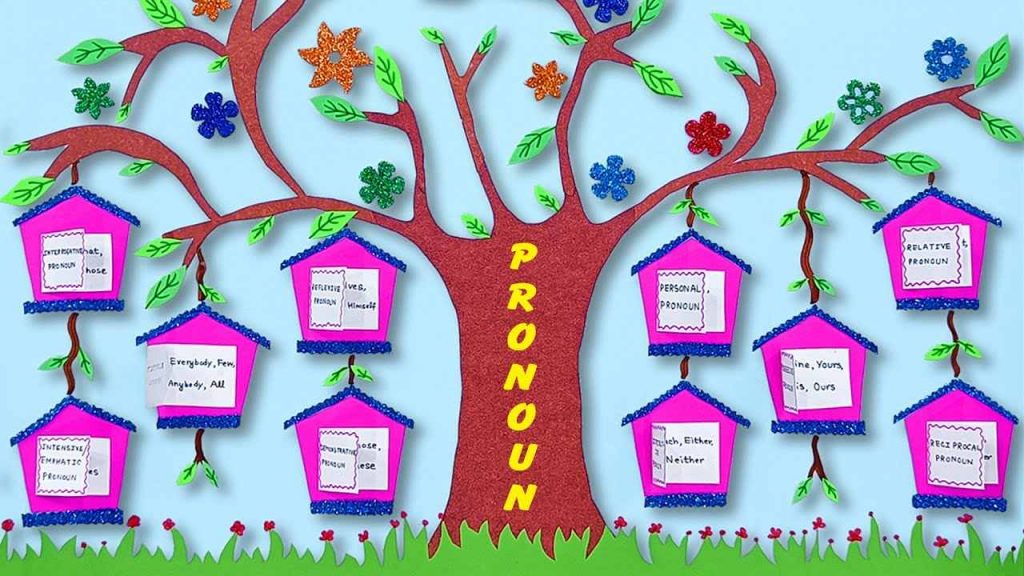
Visual grammar charts are tools that display key grammar rules, such as verb tenses, parts of speech , or sentence structures, in a clear and accessible way. These charts serve as constant visual reminders for students, helping them internalize rules by seeing them regularly during lessons.
How can I implement this strategy in the classroom? Create or use pre-made grammar charts that highlight the rules you are teaching. Hang these charts in visible areas of your classroom, such as near the whiteboard or students’ desks. Refer to them frequently during lessons—pointing to the relevant chart when discussing a rule helps reinforce the concept.
For example, when teaching verb tenses, use a chart that shows the different forms (past, present, future) with example sentences.
How can this benefit the students? Visual aids make abstract grammar rules more concrete and easier for young learners to understand. Having these charts readily available in the classroom allows students to reference them independently, encouraging self-guided learning. Over time, students will associate the visual representations with the rules, aiding in quicker recall during speaking and writing activities .
Grammar modeling through storytelling involves using stories , whether read aloud or created in class, to demonstrate correct grammar usage in a natural context. This method helps students see how grammar rules work within sentences and narratives, making abstract rules more relatable and easier to understand.
How can I implement this strategy in the classroom? During your reading sessions or telling a story, emphasize key grammar structures by reading slowly and clearly. After the story, discuss specific sentences, highlighting the grammar rules used. For example, after reading a sentence like, “The dog runs quickly,” you might point out the use of the present tense and how the adverb “quickly” describes the verb “runs.”
You can also create stories together as a class, intentionally using the grammar rules you teach, and then review the story to discuss these rules.
How can this benefit the students? Storytelling provides a meaningful context for grammar rules, making them easier for students to grasp and remember. By hearing and seeing correct grammar in use, students can better understand how to apply the rules in their own writing and speech. This method also makes grammar lessons more engaging, as students are naturally interested in stories, which helps maintain their focus and interest in the topic.
Reinforcement is a crucial part of mastering grammar, and worksheets effectively consolidate what students have learned. Students can practice specific grammar rules by completing targeted exercises, ensuring they understand and apply them correctly.
How can I implement this strategy in the classroom? After teaching a grammar rule, provide students with worksheets focusing on that specific concept. These worksheets can include a variety of exercises, such as sentence correction, fill-in-the-blank, and sentence creation tasks.
For instance, if you’ve taught the past tense, the worksheet might include sentences where students need to convert present-tense verbs to past tense. Worksheets can be used as homework, classwork, or a quick review activity. Review completed worksheets with the class, discussing common mistakes and reinforcing the correct rules. Here are some fun grammar worksheets to get started:

Explore More

How can this benefit the students? Worksheets offer structured practice that helps reinforce grammar rules by requiring students to apply what they’ve learned in multiple contexts. They allow students to work independently, giving them time to think through each question and solidify their understanding.
Additionally, worksheets provide teachers with a clear way to assess student progress and identify areas needing further review, ensuring that students gain confidence and competence in their grammar skills.
Interactive grammar journaling involves having students keep a journal where they write regularly, focusing on specific grammar rules. This method encourages students to apply what they’ve learned personally and reflectively, allowing for ongoing practice and self-assessment.
How can I implement this strategy in the classroom? Ask students to write a few sentences or short paragraphs in their journals each day, focusing on a grammar rule you’ve recently taught.
For example, if you’ve been working on past tense verbs, instruct them to write about something they did the previous day. At the end of the week, review the journal entries with the students, guiding them to identify and correct any grammar mistakes related to that week’s focus. Encourage them to self-correct as much as possible, offering guidance where needed.
How can this benefit the students? Interactive grammar journaling helps students consistently practice grammar in a low-pressure setting, reinforcing their learning over time. It also allows for personalized learning, as students can focus on their unique areas of difficulty. By regularly reviewing their writing, students become more aware of their mistakes and more confident in correcting them, leading to improved grammar skills in both writing and speaking.
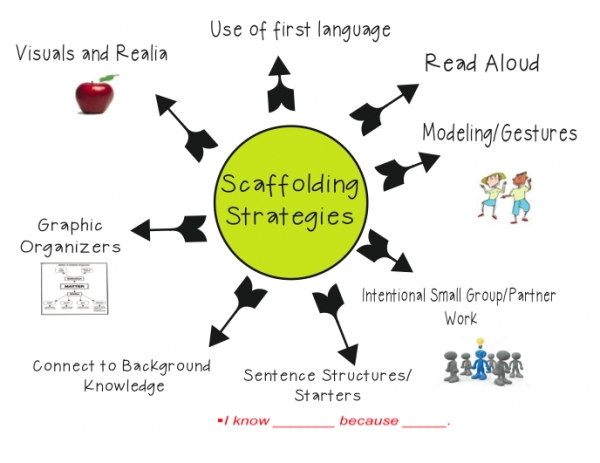
When teaching English grammar, use Scaffolded grammar exercises. It involves breaking down grammar instruction into small, manageable steps, gradually increasing the complexity as students gain confidence and understanding. This method supports students by providing a clear and structured path from simple to more advanced grammar concepts.
How can I implement this strategy in the classroom? Start with simple sentences focusing on one grammar rule at a time. For example, when teaching subject-verb agreement, begin with sentences like “The cat runs.” Once students are comfortable, gradually introduce more complex sentences, such as “The cats run quickly,” and eventually move to compound sentences like “The cat runs, and the dog barks.” Always ensure students have mastered the simpler forms before moving on to more complex structures.
How can this benefit the students? Scaffolded exercises allow students to build their understanding gradually, reducing the likelihood of confusion and frustration. By mastering one level of complexity before advancing to the next, students develop a solid foundation in grammar that they can rely on as they encounter more challenging concepts. This approach also helps cater to different learning paces, ensuring all students progress confidently.
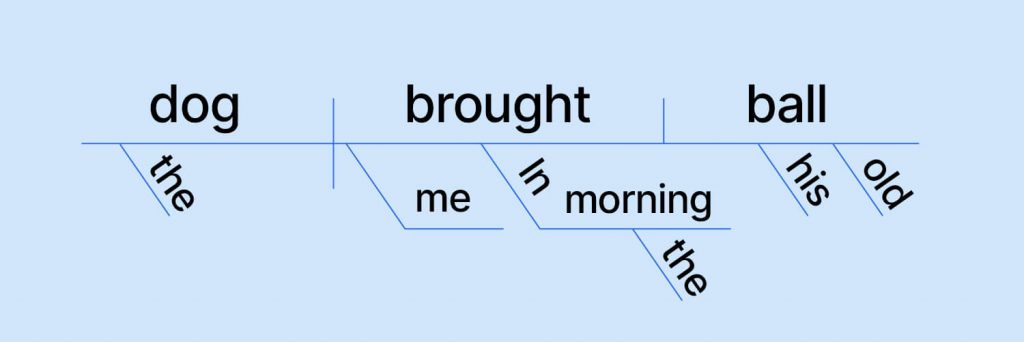
Sentence diagramming is a visual method of breaking down and analyzing the structure of a sentence. It helps students see the relationships between different parts of speech, making abstract grammar rules more concrete and understandable.
How can I implement this strategy in the classroom? Start with simple sentences and show students how to draw diagrams that separate the subject, verb, and object. For example, with the sentence “The dog runs,” you would draw a line dividing the subject “The dog” and the verb “runs.” Gradually introduce more complex sentences, adding modifiers, conjunctions, and compound elements to the diagrams. Encourage students to practice by diagramming sentences from their reading materials or their own writing.
How can this benefit the students? Sentence diagramming helps students visually understand the structure of a sentence, which can clarify how different grammar rules fit together. This method also reinforces the idea that sentences are made up of distinct parts that work together, aiding in the comprehension and application of grammar rules.
As students become more skilled at diagramming, they gain a deeper understanding of sentence construction, which can improve both their writing and analytical skills.
Immediate application in writing involves having students use a newly learned grammar rule in their writing right after it’s been taught. This strategy reinforces the rule by putting it into practice immediately, helping students internalize the concept more effectively.
How can I implement this strategy in the classroom? After teaching a specific grammar rule, give students a short writing task where they must use that rule. For example, if you’ve just taught about the use of conjunctions, ask students to write a few sentences or a short paragraph that includes conjunctions like “and,” “but,” or “because.” Review their writing as soon as they finish, providing quick feedback to correct any errors and reinforce correct usage.
How can this benefit the students? By applying grammar rules immediately in their writing, students are more likely to retain what they’ve learned. This approach bridges the gap between theory and practice, ensuring that students can use grammar rules effectively in real-world writing tasks. Additionally, immediate feedback helps correct mistakes before they become ingrained, leading to better long-term grammar skills.
Peer teaching involves pairing students to teach each other grammar rules. This method reinforces learning because teaching a concept requires a deep understanding of it, and students often benefit from explaining ideas in their own words.
How can I implement this strategy in the classroom? After teaching a new grammar rule, pair students and assign them to explain the rule to each other. You can also ask them to create sentences together that demonstrate the rule or correct each other’s work. For example, after a lesson on subject-verb agreement, one student might explain the rule while the other listens and then they both create sentences that follow the rule. Monitor their discussions to provide support and correct any misunderstandings.
How can this benefit the students? Peer teaching encourages students to take an active role in their learning, which can boost their confidence and reinforce their understanding of grammar rules. It also allows students to learn from each other in a more relaxed and collaborative environment. This method often leads to stronger retention, as students are more likely to remember a rule they’ve had to teach or discuss with a peer.
Daily grammar challenges are short, focused activities that give students the opportunity to practice a specific grammar rule each day. These challenges keep grammar practice consistent and varied, helping to reinforce rules through regular, bite-sized tasks.
How can I implement this strategy in the classroom? Create a daily routine where you present students with a grammar challenge at the start or end of each class. This could be a sentence that needs correcting, a fill-in-the-blank exercise, or a prompt to create a sentence using a specific grammar rule. For example, one day’s challenge might be, “Correct this sentence: She doesn’t like carrots.” Keep the challenges short and focused on just one rule at a time to ensure clarity and prevent overwhelm.
Here are some fun grammar worksheets that you can assign the class as part of their daily grammar challenge:

How can this benefit the students? Daily grammar challenges provide ongoing practice, helping students to reinforce their learning in a manageable and consistent way. These challenges also allow you to assess students’ understanding regularly and address any recurring issues promptly. Over time, this consistent practice helps to build students’ confidence and competence in using grammar correctly in both speaking and writing.
11. Order of Teaching Grammar to ESL Beginners
When teaching grammar to ESL students, it’s important to introduce concepts logically and gradually. Starting with the basics and slowly building up to more complex rules helps prevent confusion and ensures a solid foundation in the language.
How can I implement this strategy in the classroom? Begin with simple and essential grammar concepts, such as basic sentence structure (subject-verb-object) and the use of the present tense. Once students are comfortable with these, gradually introduce other tenses, basic pronouns, and question formation. As students progress, incorporate more complex structures like compound sentences, adjectives, adverbs, and eventually, conditional sentences.
Always ensure students have mastered one concept before moving on to the next, using plenty of examples and practice exercises to reinforce each new rule.
How can this benefit the students? Following a structured order when teaching English grammar to ESL beginners ensures that students build their understanding step by step, reducing the risk of confusion. This approach helps them gain confidence as they gradually expand their grammar knowledge, making it easier for them to understand and use English in everyday situations. By laying a strong foundation, students are better prepared to tackle more advanced grammar concepts as they continue learning.
12. Repetition with Variability
Repetition with variability involves practicing a grammar rule repeatedly but in different contexts and sentence structures. This approach helps reinforce the rule while also showing students how it applies across various situations, preventing rote memorization and promoting true understanding.
How can I implement this strategy in the classroom? Introduce a grammar rule and create multiple examples that use different subjects, verbs, and objects while still applying the same rule. For instance, if teaching the past tense, start with simple sentences like “She walked to school,” and then vary the sentence structure: “The children played in the park,” or “The teacher talked to the parents.”
Encourage students to create their own sentences using the rule, gradually increasing complexity as they become more comfortable.
How can this benefit the students? This method ensures that students don’t just memorize one sentence pattern but actually understand how to apply the grammar rule in diverse contexts. By seeing the rule in different situations, students are more likely to internalize it and use it correctly in their writing and speaking. Additionally, this approach helps students become more flexible in their language use, better preparing them for real-world communication.
Teaching grammar to young learners doesn’t have to be overwhelming. By using these strategies for teaching the English language, you can make grammar lessons more engaging and effective. Whether through immediate correction, storytelling, or reinforcement with worksheets, each method helps build a solid foundation. Consistently applying these approaches will improve your students’ understanding of grammar and make learning enjoyable.
Frequently Asked Questions (FAQs)
What are the 5 rules for teaching grammar.
- Start with the basics before moving to complex rules.
- Use clear and simple explanations.
- Provide plenty of examples and practice opportunities.
- Correct mistakes immediately and explain why.
- Reinforce learning through repetition and varied activities.
What is the correct order to teach English grammar?
Begin with basic sentence structure (subject-verb-object), then introduce present tense, followed by other tenses, pronouns, and question formation. Gradually progress to more complex rules like compound sentences and conditionals.
What is the best way to teach grammar to elementary students?
If you are looking for how to teach grammar to elementary kids, try making grammar lessons interactive and engaging through storytelling, visual aids, and hands-on activities like worksheets while providing immediate correction and clear, simple explanations.
- Pre-Kindergarten
- Kindergarten
Most Popular

76 Best Report Card Comments Samples for Teachers

117 Best Riddles for Kids (With Answers)

40 Best Good Vibes Quotes to Brighten Your Day
Recent posts.

11 Best Transition Activities for Preschoolers

15 Fun Letter E Activities & Crafts for Kids
Math & ela | prek to grade 5, kids see fun., you see real learning outcomes..
Watch your kids fall in love with math & reading through our scientifically designed curriculum.
Parents, try for free Teachers, use for free
- Games for Kids
- Worksheets for Kids
- Math Worksheets
- ELA Worksheets
- Math Vocabulary
- Number Games
- Addition Games
- Subtraction Games
- Multiplication Games
- Division Games
- Addition Worksheets
- Subtraction Worksheets
- Multiplication Worksheets
- Division Worksheets
- Times Tables Worksheets
- Reading Games
- Writing Games
- Phonics Games
- Sight Words Games
- Letter Tracing Games
- Reading Worksheets
- Writing Worksheets
- Phonics Worksheets
- Sight Words Worksheets
- Letter Tracing Worksheets
- Prime Number
- Order of Operations
- Long multiplication
- Place value
- Parallelogram
- SplashLearn Success Stories
- SplashLearn Apps
© Copyright - SplashLearn

Empower Your Classroom Today!
Engage your students., make learning easy.
Access 14,000+ activities and 450+ lesson plans to engage your students and boost their learning!
Teachers, Use for Free

Still there?
Your session is about to expire in 2 minutes.
Click "ok" to renew your session
LOGIN TO YOUR ACCOUNT
- Email* Password* Forgot password? Reset it here Keep me logged in Fields with * are mandatory Don't have an account? Register here
- Email* Fields with * are mandatory Already have an account? Login here
- Login | Register
The what and how of teaching grammar
- Linda Mahony
State Director, Northern Territory ALEA; and Top End Local Council Member, ALEA; and School of Education, Charles Darwin University, email: [email protected]
More articles by this author
Assistant Principal, Wanguri Primary School, email: [email protected]
Wanguri Primary School in Darwin in the Northern Territory, is striving to continuously improve classroom teaching and learning, with emphasis on the ongoing improvement of literacy skills through effective teaching practices. Pam, as Assistant Principal, has a role to provide strong leadership in curriculum and pedagogy, and provide support for teachers. Pam teamed up with academic partner Linda Mahony from Charles Darwin University, to investigate early years teachers’ practices (Preschool to Year 2) for effectively teaching grammar. Grammar is firmly embedded in the Australian Curriculum: English (ACARA, 2017) which requires students to demonstrate knowledge about language. The Australian Curriculum outlines specific features that are to be taught at each year level.

PUBLICATION DETAILS
- Journal: Practical Literacy: The Early and Primary Years
- ISSN (print): 2204-3667
- Publisher: Australian Literacy Educators' Association
- Publisher Location: Norwood, SA
- Volume: 22 | Issue: 3
- Date of Publication: November 2017
- Page Range: 40-42
Journal Article
- Source: Practical Literacy, Vol. 22, No. 3, Nov 2017, 40-42
- Availability: Informit, Melbourne (Vic)
- English language--Grammar--Study and teaching
- Primary school teachers
- Student teachers
- Teachers--In-service training
- Northern Territory
Loading ...
Create a new account
Can't sign in? Forgot your password?
Enter your email address below and we will send you the reset instructions
If the address matches an existing account you will receive an email with instructions to reset your password.
Request Username
Can't sign in? Forgot your username?
Enter your email address below and we will send you your username
If the address matches an existing account you will receive an email with instructions to retrieve your username
Change Password
Your password must have 8 characters or more and contain 3 of the following:.
- a lower case character,
- an upper case character,
- a special character
Password Changed Successfully
Your password has been changed
Verify Phone
Your Phone has been verified
- Technical Support
- Find My Rep
You are here
Lessons in Teaching Grammar in Primary Schools
- Suzanne Horton - Worcester University
- Branwen Bingle - University of Greenwich, UK
- Description
| ISBN: 9781446285718 | Paperback | Suggested Retail Price: $44.00 | Bookstore Price: $35.20 |
| ISBN: 9781446285701 | Hardcover | Suggested Retail Price: $136.00 | Bookstore Price: $108.80 |
See what’s new to this edition by selecting the Features tab on this page. Should you need additional information or have questions regarding the HEOA information provided for this title, including what is new to this edition, please email [email protected] . Please include your name, contact information, and the name of the title for which you would like more information. For information on the HEOA, please go to http://ed.gov/policy/highered/leg/hea08/index.html .
For assistance with your order: Please email us at [email protected] or connect with your SAGE representative.
SAGE 2455 Teller Road Thousand Oaks, CA 91320 www.sagepub.com
Supplements
Another useful book for students to look at when considering teaching grammar.
This book is good for aspiring teachers, it also served as a good refresher for new undergraduate students on the courses whose first language is not English.
This book takes an in depth look at the historical perspective influencing the development of grammar in the English language.The 'commentary' sections of the book are a great asset to busy teachers in the classroom but have not adopted it for this course as I was looking for a simpler guide for students on this professional studies course. However this is a great resource for the less confident teacher of grammar in the primary school.
This book will support student teachers both in clarifying key areas of grammar subject knowledge from the National Curriculum for English and support them as they seek to identify engaging and contextualised teaching approaches to support children's writing.
This is a great book, very easy to read with great ideas for teaching.
Teaching grammar in an effective and meaningful way is a challenge for many primary teachers, and this book provides an accessible and practical guide to grammar teaching. It will be an invaluable resource for students.
Purposeful and effective teaching of grammar is a significant challenge for many primary teachers. This book provides an accessible and practical guide to grammar teaching, and will be an invaluable resource for students.
The teaching of grammar becomes meaningful and effective when contextualised in purposeful activity that empowers children, providing comprehension, choice and control as readers and writers. Horton and Bingle make a clear case for this approach, providing accessible subject knowledge support and imaginative exemplar lessons.
This is a useful guide for teaching grammar that also underpins subject knowledge for trainee teachers.
Good structure. Very practical but with some theoretical underpinnings.
Preview this book
Sample materials & chapters.
Sample lesson starter - Lessons in Teaching Grammar
For instructors
Select a purchasing option, related products.

This title is also available on SAGE Knowledge , the ultimate social sciences online library. If your library doesn’t have access, ask your librarian to start a trial .
- Create new account
- Reset your password
Register and get FREE resources and activities
Ready to unlock all our resources?
13 ways to make grammar fun for children
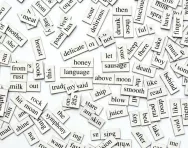
When the government introduced the Year 6 Grammar, punctuation and spelling (SPAG) test in summer 2013, it showed a commitment to a more formal approach to grammar in primary schools. The previous national curriculum was somewhat vague about how grammar should be taught; for example, in Key Stage 1, it simply stated that ‘pupils should be taught some of the grammatical features of written standard English’. The current curriculum (adopted in 2014) , however, sets out exactly which grammatical concepts should be taught in each school year , from capital letters and full stops in Year 1 right through to using passive tenses, independent clauses, colons and semi-colons in Year 6. So how can you help your child to get to grips with grammar, and actually enjoy it?
Making grammar fun for primary-school children
1. Use actions ‘Children often learn best with a multi-sensory approach, so we teach a different action for each part of speech,’ says Sara Wernham, teacher and co-founder of the Jolly Grammar scheme. For example, children touch their forehead with all five fingers for a common noun (such as ‘chair’ or ‘car’), and pump their arms backwards and forwards as if jogging for a verb (such as ‘walk’ or ‘listen’) – you’ll find the full list of actions on page 11 of the free online Jolly Grammar Guide . ‘Play games where you call out a word and get your child to do the correct action; it can get very silly, but it makes him think about what words are doing,’ Sara suggests. Or why not learn a few grammar songs or raps to sing with your child? Primary school teacher turned rapper MC Grammar offers grammar raps and lessons on his website and the MC Grammar YouTube channel .
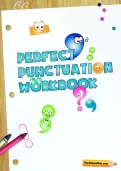
Boost your child's grammar skills
- Perfect Punctuation Workbook
- Grammar Games Pack
- PLUS 100s of other grammar resources
2. Get your sentences in order For younger children, write the words of a simple sentence – such as, ‘A duck swims on the pond.’ – on individual slips of paper, and get them to put the words in the correct order, with a capital letter at the beginning and a full stop at the end.
3. Keep it simple ‘Grammatical terms can be confusing, so it helps to simplify the terminology,’ says literacy consultant John Bald , who provides free advice to parents. ‘I refer to articles (a, an, the) as “companion words” – because all words need a little friend – and group adjectives and adverbs together as they both “add” something to a noun . Another thing to highlight is that not all verbs are “doing words” – it is confusing to say that they are, as the verbs to be and to have, the most common, don’t "do" anything! My way of explaining this is to think of things that obviously don’t do anything – for example, the dog is dead, my shirt has a hole in it – and to practise picking verbs out. It causes a lot of confusion later if children think all verbs have to do things.' 4. Read what’s around you ‘Grammar is all about pattern, and patterns are everywhere in the world, so use them as a starting point to talk about grammar,’ suggests education consultant Geoff Dean. ‘For example, the names of hairdressers’ shops and the slogans on the sides of lorries can teach children a lot about language and meaning.’ 5. Be colourful Montessori teachers – and the Jolly Grammar scheme – both allocate a colour to each specific part of speech:
- Nouns: black
- Pronouns: pink
- Adjectives: blue
- Adverbs: orange
- Conjunctions: purple
- Prepositions: green
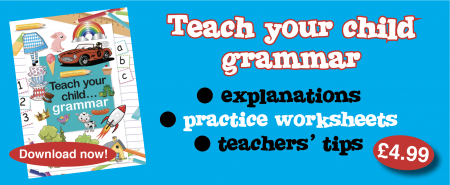
- Main course: a simple sentence with a subject and a verb
- Starter + main course: include a starter phrase, such as ‘yesterday’ or ‘one day’
- Main course + dessert: include a link word (a conjunction or connective like ‘then’ or ‘because’) or strong punctuation, like a semi-colon or colon
Your child can then build up sentences with starter, main course and dessert, and so on… 9. Silly sentence makers Appeal to your child’s silly side by encouraging him to make up funny sentences which still make grammatical sense. Write a selection of subjects, verbs, adjectives, adverbs, connectives etc on individual flashcards and get your child to compose crazy sentences, such as, ‘The hairy baby rode to the moon on a purple banana.’ 10. Tense tents To help your child understand verb tenses, draw some ‘tense tents’ on pieces of paper. Write down some verbs in their various tenses – present (e.g. play), past (played), future (will play), future continuous (will be playing) and so on – and get your child to move the verbs into the correct tent. 11. Take control over sentences ‘A good activity for older children is to challenge them to write sentences of at least 25 words that only contain one verb,’ suggests Geoff. ‘This exercise helps them to understand how to control a sentence, rather than overcomplicating it.’ 12. Dictionary corner ‘Learning to use a dictionary is an important part of mastering grammar,’ says Sara. Build familiarity with the dictionary by playing games with it: for younger children, write down a mixture of correctly and wrongly spelled words (‘toothbrush’ and ‘toofbrush’) and get them to find the right spelling, or challenge an older child by calling out unfamiliar words and timing how long it takes him to find the definition. 13. Use online resources and games There’s a wealth of interactive games that can make grammar fun. Try:
- The British Council’s grammar games
- BBC Bitesize Grammar and the BBC Bitesize interactive game Crystal Explorers : children need to use their knowledge of grammar, punctuation and spelling to unlock challenges and solve fiendish puzzles
- Best grammar and punctuation apps for children
- SPaG Monsters is an online game which focuses on core literacy skills (free trial followed by paid subscription).
- TheSchoolRun's grammar worksheets
- Great Grammar Games , a 100-page learning pack for TheSchoolRun subscribers
To brush up on your own knowledge of grammatical terminology read more articles about grammar for primary-school children or look through our literacy glossary:
- What is an adjective ?
- What is an adverb ?
- What are connectives ?
- What are prepositions ?
- What is a clause ?
- What are simple, compound and complex sentences ?
- What are direct and indirect speech ?
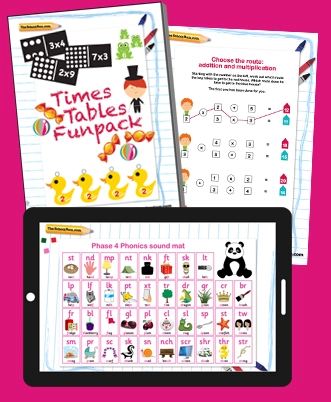
Give your child a headstart
- FREE articles & expert information
- FREE resources & activities
- FREE homework help
More like this


How to Integrate Grammar Instruction into Shared Reading or Close Reading (for K-2)
- July 28, 2019
Want to provide the absolute best grammar instruction for your students? Connect it with your reading (and writing) instruction!
Research shows that teaching grammar in the context of reading and writing is MUCH more effective than worksheets, editing drills, and isolated practice.
We want our students to see grammar and conventions used correctly in real texts. We want them to have opportunities to practice in their own writing.
In my previous post , I explained how I make grammar a part of my writing instruction.
In today’s post, we’re going to focus on integrating grammar into reading instruction!
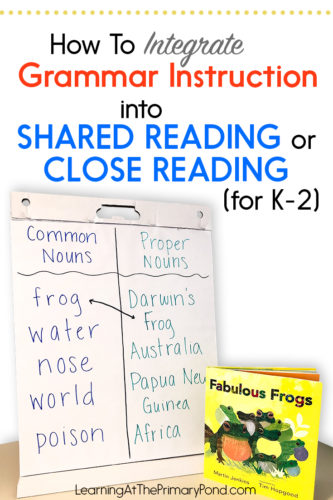
First, I want to mention that when I say “integrate” or “embed,” I don’t mean that I don’t teach grammar separately. I do —not every day but at least once a week I have a separate grammar lesson. When I can, I make grammar instruction part of reading and writing lessons that I’m already teaching. But some parts of my grammar instruction stand on their own. Just wanted to make sure that was clear! ?
How to Use Texts as Part of Your Grammar Instruction
When I wrote my post about integrating grammar into writing instruction, I explained that books/texts have a big role at the beginning of my instruction on a certain skill.
When I introduce a grammar skill or convention to students, I like to show them examples from real texts.
And my preference is to use texts that we’re already using—maybe in shared reading, close reading, or from a read-aloud.
I don’t usually bring in a completely new text just to teach a convention. Time is limited, and I’d much rather my students make the connection to a familiar text if I can!
Here’s an example:
Let’s say that we’re working on exclamation points: what they look like, what they’re called, and why authors use them. I show students a couple of misc. example sentences on the board, but then I pull out two texts we’ve recently read together.
In those two different texts (one at a time), I turn to pages where the author has used an exclamation point.
We discuss why the author did that and how the exclamation point contributes to the meaning of the text. We read the sentences aloud chorally, making sure our voices reflect the exclamation points. We may even discuss how the text would be changed if the exclamation points weren’t used.
And that’s it!
Easy, right??? But it’s meaningful because the kids are seeing how real authors use the convention (exclamation points, in this example) for a purpose. They see what effect it has on the text and on the reader.
Of course, I follow that up with more practice (including eventually having the kids use exclamation points in their own writing), but showing kids examples in real books helps ground their understanding of the convention and why it’s useful.
Why Shared Reading and Close Reading Are Excellent Opportunities to Discuss Conventions
In the example above (for exclamation points), any type of text would work. You could grab a read-aloud text, an article you read together…anything.
But I also want to point out that shared reading and close reading provide excellent opportunities for embedded conventions instruction.
In both instructional practices, you usually…
- Display the text so that students can see it clearly and read along
- Read the text more than once
These aspects make shared reading and close reading PERFECT for conventions instruction!
Displaying the text “up close” gives students access to the print, so they can more actively participate in the discussion of the grammar skill or convention.
Reading the text more than once is essential when you use a book for grammar instruction. During the first read or two, you just want students to understand the text. Once they understand the text, their attention is freed up to focus on other things—like grammar!
Here’s an example of how you might teach students about question marks as part of your shared reading routine:
On Monday, you read a short text and focus on comprehension.
On Tuesday, you read part of the text again and focus on a decoding strategy.
On Wednesday, you read part of the text again and focus on a convention, e.g., question marks. You discuss why the author used them and how it impacts the meaning of the text. You connect the author’s use of question marks to a fluency strategy: “make your voice go up at the end of a question.”
Again…easy! But effective!
Working with Grammar Skills That Are Trickier to Integrate
In both of the previous examples, I mentioned punctuation marks. Those are pretty easy to integrate into your reading lessons, right? Capital letters are relatively straightforward too.
But what about those grammar skills that are a little trickier to integrate? Here are some more ideas to get you started:
Nouns – have students identify nouns in a text that describe a character, describe the setting, or tell where an animal lives.
Common vs. proper nouns – with a nonfiction text, create a t-chart of the common and proper nouns from a few pages and discuss why the author chose to use a common noun in some case and a proper noun in others
Pronouns – practice finding the antecedent of a few pronouns in a story
Verbs – work together to make a list of all the action verbs used in a story, discussing how the verbs differ and what they mean.
Adjectives – in a nonfiction book, discuss how the author uses adjectives to “paint a picture in our minds” and teach us detailed information
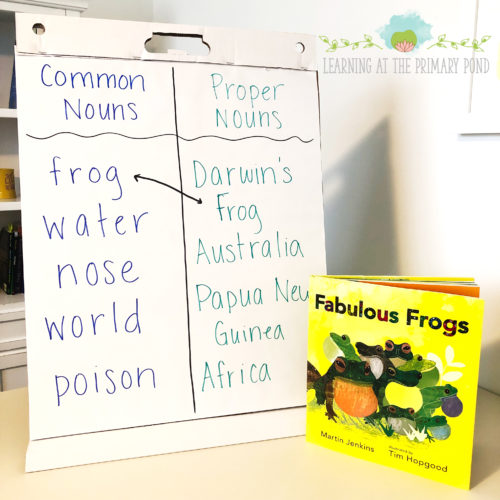
Integrating grammar into your shared reading or close reading instruction is a simple—but effective—way to teach students about the way language works.
In the next post, I share more about how to find time for your grammar instruction, because as I mentioned earlier, not all of my grammar instruction happens during reading and writing lessons.
Update! The grammar series is now complete! You can read each post in the series here:
- Best Practices for Teaching Grammar in K-2
- How to Integrate Grammar Into Your Writing Instruction
- How to Find Time for Grammar Instruction
- 5 Tips for Helping K-2 Students Actually Apply Their Grammar Learning
- Grammar Skills by Grade Level: a List of Grammar, Language, and Writing Conventions to Teach in K-2
- 15 Picture Books For Teaching Grammar and Conventions
- Grammar ALIVE! A 3-Part Approach for Engaging, Relevant Grammar Instruction in K-2
Need grammar lessons, materials, and games for all year long? Click on any of the images below to read more about my Grammar Alive program for Kindergarten, first grade, and second grade :

Related Posts:
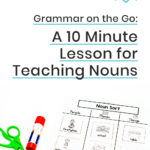
Great post! Thanks for sharing how you teach grammar. I am finding this to be very helpful.
I’m so glad! Thanks for reading! 🙂
This is exactly what i was looking for. Thank you author
You’re so welcome! 🙂
Thank you .
You’re welcome!

I’m Alison, a literacy specialist. I love getting kids excited about reading and writing – and sharing teaching ideas with other teachers!
Find It fast
Bestsellers.

- Classroom Organization and Classroom Decor
- General Instructional Strategies
- Homework and Home-School Communication
- Mentor Texts and Other Books
- Science and Social Studies
- Teaching in Spanish
- Tips for Teachers
- Word Work / Phonics
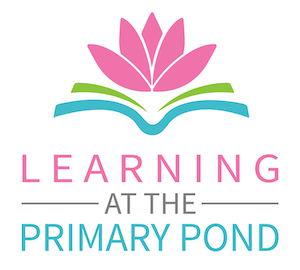
Copyright © 2024 Learning at the Primary Pond | Privacy Policy Site Design by Laine Sutherland Designs
- Find My Rep
You are here
Key principles for teaching grammar.

The purpose for teaching grammar is not simply for you to be confident about correcting mistakes in children’s work, nor is it to pass on tricks and techniques to be replicated in a mechanistic way. This does not make children writers or lead to good writing.
Teaching grammar effectively is about enabling children to control grammar to express increasingly complex ideas. When grammar is taught well, it can make a significant different to children’s literacy development.
Here are 7 key principles to bear in mind when teaching grammar:
Build up your own subject knowledge To teach grammar, you need explicit as well as implicit knowledge, to be confident about using the correct terms and explaining these. Don’t just learn the next term you are teaching. It is important to be able to relate new learning to other features and the text as a whole.
Give talk a high priority in your classroom Children need to be able to select from a wardrobe of voices that includes Standard English.
Remember the purpose of teaching grammar Grammar is not simply the naming of parts of speech or for teaching the rules of English. It needs to be strongly embedded in classroom talk, reading and writing.
Teach grammar in context By introducing children to grammatical features and language in context, you will be helping them to internalise these principles. Try not to go for the ready-made solution by using a worksheet from a book. It will make very little difference to children’s use of language and will be meaningless for those learners who are not yet able to think in abstract ways.
Read aloud and discuss how authors use grammar Children who read extensively and are read to will have a ‘toolbox’ of structures, patterns and rhythms to draw on.
Be systematic Make sure you know what the class you are working with have already learned and what they need to learn now. Link new learning with their prior knowledge.
Make learning grammar fun Teaching grammar can involve investigations, problem-solving and language play as part of developing children’s awareness of and interest in how language works.
*This is an edited extract from Teaching Grammar, Punctuation and Spelling in Primary Schools .
Find out more
Filter Results
- clear all filters
Resource Type
- Worksheets
- Guided Lessons
- Lesson Plans
- Hands-on Activities
- Interactive Stories
- Online Exercises
- Printable Workbooks
- Science Projects
- Song Videos
middle-school
- Fine arts
- Foreign language
- Math
- Reading
- Writing
- Phonics
- Spelling
- Language and Vocabulary
- Grammar and Mechanics
- Science
- Social emotional
- Social studies
- Arts & crafts
- Coloring
- Holidays
- Offline games
- Seasonal
- Common Core
Printable Preschool Grammar Worksheets

- 0 Shopping Cart £ 0.00 -->

The Importance of Learning Grammar at an Early Age

Discover why it is important for young children to learn about complex grammar practices.
One of the key features of the current National Curriculum was the introduction of Vocabulary, Grammar and Punctuation as an independent subject within the English Programme of Study for Key Stage 2.
The Department of Education also brought in a statutory Spelling, Punctuation and Grammar or SPaG test, which requires children to demonstrate competence in this area during their KS2 SATs.
The government states: “Explicit knowledge of grammar is … very important, as it gives us more conscious control and choice in our language.”
So let’s go a little deeper into the theory behind teaching grammar and punctuation at primary level.
Why is it important to learn English grammar at primary school?
Grammar is at the centre of both our spoken and written communications, and allows us to be clearly understood by others.
Using grammar poorly can result in messages being unclear, which affects our ability to communicate, and can hinder relationship building – an important skill for youngsters to develop.
Using grammar correctly, on the other hand, makes listening and reading easier for others, making communication more enjoyable, and positively impacting relationships.
Grammar also enables children to expand their vocabulary as they learn more interesting ways to communicate messages and present information.
How does Grammar affect a child’s learning?
It’s thought that by teaching children different grammatical components, their writing and language skills develop at a faster rate.
Acquiring good grammar skills is thought to positively affect other learning areas, such as:
- Attention and concentration
- Language comprehension
- Expressive skills
- Reading and writing
- Story-telling
- Thinking skills
It’s believed that learning grammar helps children become better prepared for commencing secondary education, where they’ll be marked on their SPaG skills in essays and assignments across all subjects; not to mention English tests and checks.
By encouraging grammar in use throughout education, young people also become better equipped for the world of work. Many employers value good grammar skills in an employee, and the first place they look is the job application.
What happens if grammar isn’t taught effectively?
If children don’t learn how to use correct grammar, they may experience difficulties in a number of areas, both in work and education, and in their personal lives.
Poor grammar may lead to difficulties in:
- writing essays and completing written exams
- understanding complex reading exercises
- comprehending complex text materials
- writing successful job applications
- terms of mental health
- social interactions
The significance of grammar teaching has reinforced the need for effective methods for helping children to acquire good grammar skills, both for teachers and parents.
HeadStart’s English Grammar and Punctuation Series provides curriculum-led teaching as well as a number of activities and worksheets that can be completed at home.
Sign up to the HeadStart Newsletter
Sign up to our newsletter to receive great articles, new products and offers.
Subject Areas
Maths English Science
Inspection Copies Scaled Score Tests Activities
Important Links
Privacy Policy Cookie Policy Delivery Policy Returns Policy Terms & Conditions Subscription Terms and Conditions FAQs
Website by WHD Solutions

Privacy Overview
| Cookie | Duration | Description |
|---|---|---|
| __stripe_mid | 1 year | Stripe sets this cookie cookie to process payments. |
| __stripe_sid | 30 minutes | Stripe sets this cookie cookie to process payments. |
| cookielawinfo-checbox-analytics | 11 months | This cookie is set by GDPR Cookie Consent plugin. The cookie is used to store the user consent for the cookies in the category "Analytics". |
| cookielawinfo-checbox-functional | 11 months | The cookie is set by GDPR cookie consent to record the user consent for the cookies in the category "Functional". |
| cookielawinfo-checbox-others | 11 months | This cookie is set by GDPR Cookie Consent plugin. The cookie is used to store the user consent for the cookies in the category "Other. |
| cookielawinfo-checkbox-advertisement | 1 year | Set by the GDPR Cookie Consent plugin, this cookie is used to record the user consent for the cookies in the "Advertisement" category . |
| cookielawinfo-checkbox-necessary | 11 months | This cookie is set by GDPR Cookie Consent plugin. The cookies is used to store the user consent for the cookies in the category "Necessary". |
| cookielawinfo-checkbox-performance | 11 months | This cookie is set by GDPR Cookie Consent plugin. The cookie is used to store the user consent for the cookies in the category "Performance". |
| CookieLawInfoConsent | 1 year | Records the default button state of the corresponding category & the status of CCPA. It works only in coordination with the primary cookie. |
| viewed_cookie_policy | 11 months | The cookie is set by the GDPR Cookie Consent plugin and is used to store whether or not user has consented to the use of cookies. It does not store any personal data. |
| Cookie | Duration | Description |
|---|---|---|
| _ga | 2 years | The _ga cookie, installed by Google Analytics, calculates visitor, session and campaign data and also keeps track of site usage for the site's analytics report. The cookie stores information anonymously and assigns a randomly generated number to recognize unique visitors. |
| _gat_gtag_UA_52250358_1 | 1 minute | Set by Google to distinguish users. |
| _gid | 1 day | Installed by Google Analytics, _gid cookie stores information on how visitors use a website, while also creating an analytics report of the website's performance. Some of the data that are collected include the number of visitors, their source, and the pages they visit anonymously. |
| CONSENT | 2 years | YouTube sets this cookie via embedded youtube-videos and registers anonymous statistical data. |
| Cookie | Duration | Description |
|---|---|---|
| VISITOR_INFO1_LIVE | 5 months 27 days | A cookie set by YouTube to measure bandwidth that determines whether the user gets the new or old player interface. |
| YSC | session | YSC cookie is set by Youtube and is used to track the views of embedded videos on Youtube pages. |
| yt-remote-connected-devices | never | YouTube sets this cookie to store the video preferences of the user using embedded YouTube video. |
| yt-remote-device-id | never | YouTube sets this cookie to store the video preferences of the user using embedded YouTube video. |
| Cookie | Duration | Description |
|---|---|---|
| m | 2 years | No description available. |
| wp_woocommerce_session_49afe862bb2ef504ccd843e13c26ff74 | 2 days | No description |

IOE - Faculty of Education and Society
The Grammar and Writing Research Project

A mixed-methods research project in collaboration with the UCL Survey of English Usage to assess whether 'Englicious', a new approach to teaching grammar, has benefits for children’s writing at KS1.

Grammar has a much greater emphasis in the 2014 National Curriculum for England than in previous national curricula, and knowledge of grammar is assessed and tested in schools at Key Stages 1 and 2.
Englicious is a web-based platform that was developed at UCL and is informed by cutting-edge linguistics. It advocates an innovative, interactive, game-based approach to grammar teaching.
As of November 2020, over 10,000 teachers have signed up to use the platform.
- Professor Bas Aarts , UCL Department of English Language and Literature
- Dr Jake Anders , IOE
- Dr Ian Cushing , Brunel University London
- Professor Julie Dockrell , IOE
- Dr Yana Manyukhina , IOE
- Dr Sue Sing , IOE
- Professor Carole Torgerson , University of York
- Professor Dominic Wyse , IOE
The aims of the project are:
- to contribute to the knowledge base in relation to the ways in which the teaching of grammar impacts on pupils’ writing
- to support teachers in relation to the teaching of writing required by the National Curriculum in England
- to bring new evidence to the attention of policy makers who are responsible for the teaching of English, and specifically grammar, in the National Curriculum.
The outcomes will also be of interest to other countries, where English is the dominant language in schools, because the teaching of grammar is included as part of most national curricula for primary schools.
- To what extent is the web-based 'Englicious' Intervention (EI) effective in improving pupils’ writing?
- What are the main implications for teacher practice as a result of implementing EI and, more generally, for evidence-informed teaching of writing?
- In what ways do the outcomes of the research have implications for the teaching of writing in the National Curriculum for primary schools in England?
The 'Englicious' approach is being evaluated by using the mixed methods design of Randomised Controlled Trial (RCT) and qualitative process evaluation.
70 year two teachers have been allocated at random to two groups:
- The 'Englicious' Intervention (EI) will be trained to use 'Englicious' in lessons
- The ‘business as usual’ group will teach their normal writing lessons and will not receive additional training until project completion.
Children’s writing will be assessed using a standardised test and a bespoke sentence construction measure:
- pre-randomisation, and
- at the end of the school year, after the treatment group has received the EI intervention.
Spring 2019
The project began. Following a successful recruitment phase, the project team began working with 64 primary schools and excellent progress was being made until COVID-19 resulted in the closure of all schools across the country and a national lockdown being imposed in March 2020.
Autumn 2020
Project activities resumed with many of the same schools and with an encouraging number of newly-recruited schools across London and the neighbouring counties of Essex, Kent and Surrey (70 schools, in total).
However, the project incurred further delays due to another national lockdown in January 2021. In March 2021, all new schools were randomised and all new intervention school teachers received our free training on the Englicious intervention.
Summer 2021
All teachers in the intervention group delivered the Englicious lessons throughout this term while schools in the comparison group continued to teach grammar under a ‘business-as-usual’ approach.
During this time, team members conducted a series of process evaluation fieldwork visits to 12 participating schools (six intervention schools and six comparison schools, selected through a randomised process). These visits enabled us to gather invaluable qualitative data on the teaching and learning of grammar through opportunities to observe lessons and through semi-structured discussions with the participating teacher in each school.
During the final weeks of term, the participating children in all schools (c.2000) completed two post-intervention writing activities. This data, along with similar data gathered for the children’s baseline measure (c.12,000 scripts of writing), was scored by an appointed team of markers who were provided with specialist training and guidance. Inter-rater reliability checks were conducted throughout to ensure greater robustness in the marking process.
Autumn 2021
The research team have been analysing all of the quantitative and qualitative data gathered. The team are currently preparing a final report, which is due to be submitted shortly to The Nuffield Foundation (funder).
End-of-project dissemination conference
This will take place on Tuesday 23 November 2021. It is a free event of particular interest to primary school teachers, literacy leads, headteachers, researchers, academics and policymakers: see more information or sign up for a place .
Further updates will be provided on this page as our work progresses so do check back for the latest news.
Any questions?
Or would you like to know more about any particular aspect of our research? Email us [email protected]
- Grammar and Writing in England's National Curriculum: A Randomised Controlled Trial and Implementation and Process Evaluation of Englicious
- Evaluation protocol
- Statistical analysis plan
Helen Hamlyn Centre for Pedagogy (HHCP) Department of Learning and Leadership IOE, UCL's Faculty of Education and Society University College London 20 Bedford Way London WC1H 0AL
email: [email protected]
In partnership with
UCL Survey of English Usage
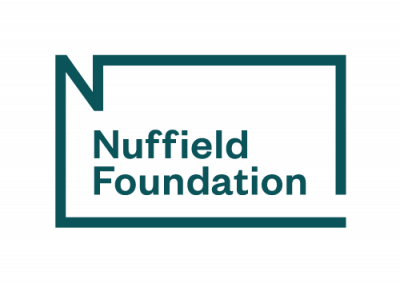
The Nuffield Foundation

- Class Schedule
- Degrees/Certificate Plans
- Academic Programs
- School of Humanities
- School of Business, Social Sciences & Public Svcs.
- School of Math, Physics & Technology
- School of Science & Health
- Apprenticeship Training
- Beyond Boundaries
- Academic Calendars & Finals Schedule
- Academic Success Center (ASC) - Arnold
- Academic Success Center (ASC) - Hillsboro
- General Information
- Foundations Lab Team
- Online Options
- Peer Tutoring
- Learning Sessions
- Online Math Lab
- Online Science Lab
- Online Writing Lab (OWL)
- Adult Education & Literacy
- ARO Getting Started
- Current and Returning Students
- Website Accessibility
- Eligibility Requirements
- Services Provided
- Online Application
- Find It @ Your Library
- Ask a Librarian
- Book a Space
- Books, Movies, Music
- Find Articles
- Government Documents
- History Center
- Citing Sources
- Faculty Support
- Journals By Title
- Meet the Library Staff
- Dictionaries, Encyclopedia, and Thesauri
- Hillsboro Testing Center
- Arnold Testing Center
- College Catalog
- Credit for Prior Learning
- Dual Credit and Dual Enrollment
- Courses Available
- How To Apply
- Information for Teachers
- Apply to the ATS
- Automotive Technology
- Biomedical Sciences
- Building Repair Technology
- Culinary Arts
- Digital Media Technology
- Early Childhood & Elementary Education
- Fire Science
- Health Services
- Metal Fabrication
- Residential Carpentry
- Welding Technology
- Health Occupations Students of America
- National Technical Honor Society
- Important Documents
- ATS Request Info
- Student Showcases
- Certified Logistics Technician (CLT) Program
- Computer Skills
- Computers & Information Technology
- Construction & Mechanical Occupations (CAMO)
- Construction Trades
- Drinking Water/Waste Water Operators
- Education/Exam Prep
- Food Service/Hospitality Industry
- Healthcare Programs
- HR Professional Development
- Industrial Safety/OSHA Training
- Learning Partners
- Management/Quality
- Manufacturing Programs
- Online Program Options
- Apprenticeship
- Business Partners
- Customized Training Solutions
- Missouri One Start
- Small Business Development Center
- Industry and Education
- Show Me Strong
- Current Offerings
- Community Partnerships
- Degrees & Courses Online
- How to Take Online Courses
- Online Student Information
- Canvas Help
- Honors Program
- Academic Service Learning
- Teaching Toolbox
- CTL Archive
- DESE/HiSET Info
- Orientation & Class Schedules
- Student Resources
- Locations & Hours
- Meet the Team
- AEL Student Opportunities

Student Services
- Getting Started - New Students
- Returning Students
- International Students
- How to Get Started
- Tips for Adult Learners
- Adult Learner FAQ
- Adult Learner Resources
- Early College
- Visit Campus
- Request Information
- Meet the Admissions Team
- Tuberculosis (TB) Screening Information
- Your Story Starts Here
- Preview Day
- Professional License Disclosure
- Veteran Services
- Math & English Placement
- Meet with an Advisor
- Attendance Reminder
- Consortium Agreement
- Contact Info
- Cost of Attendance
- FAFSA Overview
- FAFSA Delay - Q & A
- Financial Aid Eligibility
- Financial Aid Programs
- Coronavirus Relief Funds - CARES
- Coronavirus Relief Funds - CRRSAA
- Coronavirus Relief Funds - ARP
- Fast Track Grant
- Net Price Calculator
- Payment Options
- Rights and Responsibilities
- Satisfactory Academic Progress
- Scholarships Offered
- Steps to Apply
- Student Loan Information & Forms
- Loan Repayment Options
- Private Student Loans
- Exit Counseling
- Tuition/Fees
- Verification Information & Forms
- Dependency Override Information & Forms
- Professional Judgment Information & Forms
- Workstudy - Student Worker
- Transfer to Jeffco
- University Partnerships and Transfer Guides
- Missouri CORE42
- Missouri Reverse Transfer
- Enrollment Services
- Non-Discrimination Policy
- SPARC Training
- Reporting Prohibited Conduct
- Supportive Measures
- Student Conduct
- Suicide Prevention
- Vikings Care

Campus Life
- Student Senate
- Aspiring Educators
- Black Student Union
- D&D (Ragnarok Syndicate)
- Green Alliance-Conservation Club (GACC)
- JC Navigators
- JC Writing Club
- Legion of Gamers
- Multicultural Club
- National Society of Leadership & Success
- Phi Theta Kappa Honor Society
- Radiology Tech Club
- Student Nurse Club
- Club Interest Form
- Charting Your Course
- FYE College Studies
- Plan and Prepare
- Resources for Families
- Resources for Students
- Health & Fitness
- Housing Application
- Guest Forms
- Unit Condition Report
- Furniture & Floor Plans
- Resident Guide
- Resources for Family & Friends
- Viking-Ready Book Bundle
- Career Development
- Quality Care and Education
- Contact Information
- Family Handbook
- Mission Vision Values
- Tuition and Policies
- Students & Alumni
- Resources & Tips
- Food Pantry
- Get Help Now
- Helpful Resources
- Vikings Care Initiatives
- Ask, Listen, Refer
- Social Media
- Student Leaders
- Viking Cafe / Dining

- Schedule/Scores
- Coaching Staff
- Vikings in Professional Baseball
- NJCAA Statistics
- Vikings Moving On - Baseball
- Baseball Recruit Form
- Vikings Moving On - Basketball
- Basketball Recruit Form
- Schedule/Score
- Vikings Moving On - Soccer
- All-Time Roster
- Soccer Recruit Form
- Vikings Moving On - Softball
- Softball Records
- Softball Recruit Form
- Volleyball Recruit Form
- Recruitment
- Cross Country Schedule
- Athletic Directory
- Student Athlete Success
- Student-Athlete Handbook
- Fitness Center
- SportsWare & Physical Information
- Athletic Training
- JCTV / Game Videos
- Ticket Information

- Upcoming Events
- PACE Brochure
- PACE Mail List
- Purchase Tickets
- Art Calendar of Events
- Music Events
- Theatre Events

- Board Policies
- Board Procedures
- Meeting Agenda
- Meeting Dates
- Meeting Minutes
- College Administration
- Academic Probation-Suspension Procedure
- Dean's List
- In-District Tuition Request
- In-State Tuition Request
- Medical Withdrawal Information
- Tuition Refund Appeal Information
- Mission, Vision, Values
- Accreditation
- Why Go to Jefferson College?
- Year 4 Assurance Review
- Learn About HLC
- Things To Know
- Diversity Committee/Plan
- Get Support
- Toolkit - Articles/Resources
- Classroom Management/Activities
- Grants and Sponsored Research
- Strategic Planning
- Online Learning
- Faculty Spotlights
- Meet Our People
- Communicable Diseases
- Crime Statistics / CLERY
- Annual Security & Fire Safety Report
- Department Services
- Drugs/Alcohol Policy
- Emergency Contact Information
- Missing Student
- Parking/Traffic Regulations
- Report a Crime
- Safety Tips & Videos
- Sex Offender Registry
- Smoke-Free Campus
- Training Opportunities
- Applying for Graduation
- Commencement Information
- Graduation Apparel
- News and Events
- Consumer Information
- Inclement Weather
- Institutional Review Board
- Grade Information
- Withdrawing, Dropping & Adding Courses
- Windjammer Newsletter
- Construction and Facilities History
- Veterans Memorial
- Alumnus Nomination Form
- Human Resources & Jobs
- Child Development Center
- Employment Services
- Community Service
- Friday Speaker Series
- Math Contest Application
- Payment Information
- Sponsor Packet
- SkillUP Program
- Procurement
- 1098T Tax Forms
- Fitness Membership
- Observatory
- Facility Use Reservation

- Ways to Give
- Monticello Society
- Scholarship Program
- Viking Fund
- Contact the Foundation
- Veterinary Technology Expansion

Early Childhood Education
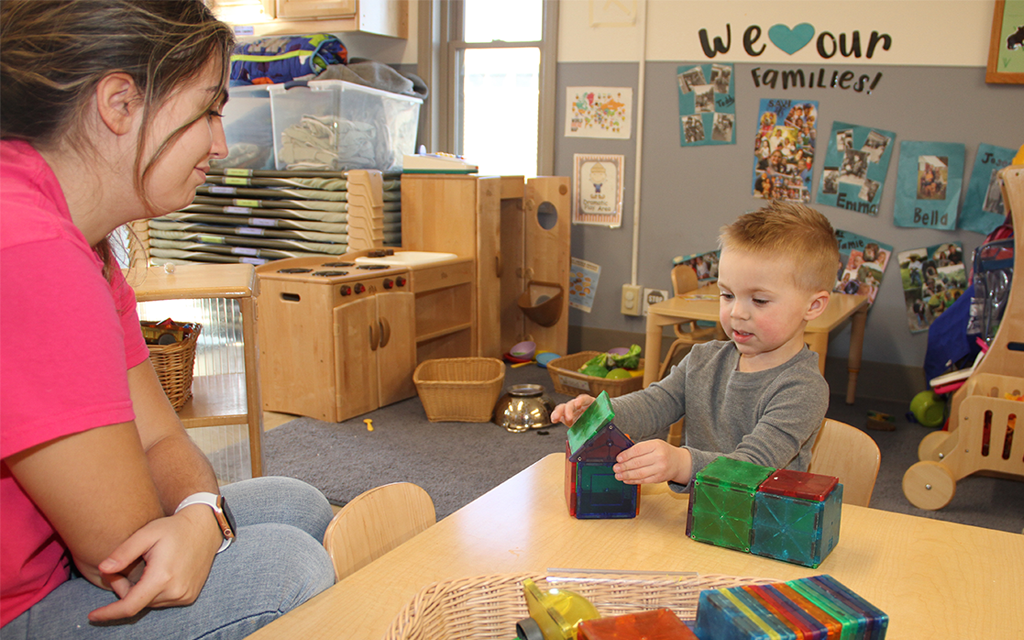
Program Overview
The primary purpose of the Early Childhood Care and Education program is to provide students with the background and professional competencies necessary for employment in the field of early childhood care and education. Upon graduation, students will be prepared for employment in a variety of settings including preschools, day care centers, school-age child care centers, residential centers, public schools (as classroom assistants), and recreation centers.
A substantial number of transfer credits will be earned for those students who later decide to pursue an education degree at a senior institution. This allows students to build upon their foundational knowledge in early childhood care while facilitating a seamless transition into higher education.
All participants in the Child Care/Early Childhood Education degree and certificate programs must meet all current regulations for personnel regarding health and child abuse/neglect screening mandated by the Missouri Division of Health Day Care Licensing Agency. This compliance ensures that students enter the workforce with the necessary certifications and understanding of important safety and welfare standards.
Degree Information
The Associate of Applied Science (A.A.S.) degree is designed for entry-level employment through practical and theoretical courses. Please see individual degree plans listed below for specific degree/certificate requirements.
Associate of Applied Science
Academic Plan
The Academic Plan is a semester-by-semester plan for the full-time student. Part-time students should work with an advisor to customize the map to fit individual needs.
Early Childhood Academic Map
Early Childhood Education Certificate
Course Guides
Jefferson College Institutional Course Guides (ICGs) are found in the Simple Syllabus - Syllabus Library AND/OR within your Canvas class page via the Simple Syllabus link in the Course Navigation Menu.
View the Early Childhood Education ICGs.
Career Opportunities
The field of early childhood education offers a variety of rewarding career paths for individuals looking to work with young children. Careers range from teaching positions to administrative roles, each requiring different educational backgrounds and skills.
The demand for qualified early childhood education professionals is projected to grow significantly in the coming years, driven by an increasing awareness of the importance of early childhood education . This growth presents a wealth of opportunities for individuals interested in pursuing a career in this field, making it a promising and fulfilling path for prospective educators and childcare providers.

Cookies on Teaching Vacancies
We’d like to set additional cookies to understand how you use this service and help us improve it. We also use cookies set by other sites to help us deliver content from their services.
beta This is a new service - your feedback will help us to improve it.

Early Years and Year 1 Teacher
12 days remaining to apply, job start date.
1 January 2025
Closing date
11 October 2024 at 12pm (midday)
Date listed
25 September 2024
Job details
Visa sponsorship, working pattern, contract type, what skills and experience we're looking for.
Exciting Opportunity: EYFS and Year One Teacher
Salary Scale: Main Pay Scale/Upper Pay Spine
Full Time/FTE 1.0
Are you passionate about shaping young minds and fostering a love for learning? Join our newly formed team at a wonderful small and nurturing village school - make a lasting impact on our children's first steps in education!
What we offer:
- A welcoming, supportive environment with a collaborative team
- Opportunities for professional development and growth
- Access to modern resources and an engaging curriculum
- A chance to inspire creativity, curiosity, and a love for learning in children
What we're looking for:
- Qualified teacher with a genuine passion for early childhood education
- A nurturing, patient, and enthusiastic approach
- Strong communication skills with children, parents, and colleagues
- Commitment to creating a positive and inclusive learning environment
- Ability to adapt to individual learning needs and inspire young learners
Your role will include:
- Delivering engaging lessons tailored to the EYFS curriculum
- Encouraging children to explore, play, and discover in a safe setting
- Observing and assessing children's progress to support their development
- Collaborating with staff and parents to ensure the best outcomes for every child
What the school offers its staff
Enthusiastic, motivated children who are keen to learn.
- Dedicated, inspirational and talented staff.
- An ambitious, supportive and committed governing body.
- An inclusive learning environment to meet our children’s needs.
- Supportiveparents and carers.
- Strong links with the local community, partnership schools and our local church.
- A great foundation for continued success and an exciting future.
Commitment to safeguarding
Oxfordshire Schools are committed to safeguarding and promoting the welfare of children and young people and expect all staff and volunteers to share this commitment. This post involves the type of work with children and young people that requires applicants to undertake a Disclosure and Barring Service check. The possession of a criminal record will not necessarily prevent an applicant from obtaining this post. All users are considered confidentially and according to the nature of the role and information disclosed.
Applying for the job
Please download the application form using the link below, and once completed send to [email protected]
CVs are not accepted.
Upload additional documents
If you need these documents in an accessible format, please contact the school.
About Little Milton Church of England Primary School
This is a rare opportunity to lead a successful Church of England School in a beautiful rural Oxfordshire village, close to the historic City of Oxford and within 5 minutes of the M40.
Our current Co-Headteachers have successfully led the school forward, developing it to a thriving and growing primary school of 56 pupils in addition to 4 nursery children. With a ‘good’ OFSTED rating, we are looking for a vibrant, inspirational headteacher/s to continue to build on this success and deliver the outstanding education our children deserve.
What we can offer...
- Enthusiastic, motivated children who are keen to learn.
- Supportive parents and carers.
- Passionate about inspiring and motivating our children?
- A confident, motivated and dynamic candidate to take the school forward?
- An inspirational educator and leader with current primary teaching experience?
- Committed to professional development for self and others?
- Able to nurture and develop our staff team?
- Ready for an opportunity to make a real difference to the lives of children and families within this local community?
KEY INFORMATION
Start date: in line with the successful candidate's notice period January 2025, or earlier if available.
This post is full time with a flexible teaching commitment. We are open to appointing a job share post. Candidates seeking a job share post are advised to find a partner before applying.
Arranging a visit to Little Milton Church of England Primary School
To arrange a visit and increase the chance of a successful application email [email protected] .
School location
Similar jobs nearby.
Year 6 Teacher - Part-time
Quick Apply
Bladon Church of England Primary School
Park Street, Woodstock, Oxfordshire, OX20 1RW
Teacher in Outstanding Special School
Northern House Academy
South Parade, Oxford, Oxfordshire, OX2 7JN
Part Time Class Teacher (Maternity Cover)
John Blandy Primary School
Laurel Drive, Abingdon, Oxfordshire, OX13 5DJ
John Hampden Primary School
Park Street, Thame, Oxfordshire, OX9 3HU
Get a job alert when similar jobs are listed
Find more school jobs in Oxford and Oxfordshire

IMAGES
VIDEO
COMMENTS
Teach grammar rules through catchy songs and rhymes that children can remember and recite. 5-8 years. Audio recordings, lyrics sheets. Aids memorization of rules and patterns in grammar. Sentence Building Activities. Provide students with word cards to construct and rearrange sentences. 6-11 years. Word cards, sentence strips.
Thinking skills. It's believed that learning grammar helps children become better prepared for commencing secondary education, where they'll be marked on their SPaG skills in essays and assignments across all subjects; not to mention English tests and checks. By encouraging grammar in use throughout education, young people also become ...
5. Ask students to reflect on the concept's impact. Finally, I recommend asking students to reflect on the importance of the focal grammatical concept. To engage students in this kind of ...
ABSTRACT. Understanding and Teaching Grammar in the Primary Classroom is a practical guide for trainee and practising teachers, with language, and the way we use it to think and communicate, at its heart. Built on a foundation of how powerful, beautiful and thought-provoking language is, this book uses our intuitions about words and language to ...
Grammar ALIVE! A 3-Part Approach for Engaging, Relevant Grammar Instruction in K-2. And if you need grammar lessons, materials, and games for all year long, click on any of the images below to read more about my Grammar Alive program for Kindergarten, first grade, and second grade:
Wondering what grammar skills to teach to your Kindergarten, first grade, or second grade students? I've got you covered! In this "grammar skills by grade level" post, I'm listing out skills to teach in each grade level, K-2! Where did this list come from? Well, it reflects the Common Core Standards — but also what I've personally seen to be appropriate and helpful for each grade ...
The even better news is that the annex of the 2014 curriculum recognises this, stating: "Explicit knowledge of grammar is, however, very important, as it gives us more conscious control and choice in our language. Building this knowledge is best achieved through a focus on grammar within the teaching of reading, writing and speaking.".
Grammar & punctuation. Spelling, punctuation, and grammar - often called SPaG in schools - are crucial building blocks for children learning to speak, write, and listen. Having a good knowledge of grammar allows your child to communicate their ideas and feelings, and helps them choose the right language for any situation.
Trainee and beginning teachers often find the teaching of grammar especially challenging. This popular text provides the subject knowledge you need to teach grammar, punctuation and spelling and explores how to teach it. Detailed examples of effective lessons show you how to engage children's interest in some of the more formal aspects of ...
Watch your kids fall in love with math & reading through our scientifically designed curriculum. Parents, try for free Teachers, use for free. In this blog, we'll explore 12 practical approaches to help you turn these tricky grammar lessons into engaging and effective learning experiences. 1. Immediate Correction with Explanation.
A very brief history of teaching grammar. In the eighteenth century, the study of grammar was perceived as an exercise in mental discipline, intended to train the mental faculties of memory and reason (Applebee, 1974; Scholes, 1998). Grammar study focused on the learning of rules and their application.
Lesson Plan. This fun flap book will help your students name the first letter and the beginning sound of zoo animals. Winning Hopscotch: Sight Words. Lesson Plan. Have your students jump into this fun reading lesson. It features an engaging game of hopscotch and lots of sight word practice. The Quaint Letter Q.
In English, grammar encompasses word order (syntax), tenses (past, present, future etc) and different word types (nouns, verbs, adjectives etc). English grammar is the foundation of good communication, reading comprehension, writing and story-telling. This is why teaching grammar is so important for young children.
Grammar is the system of patterns and structures, a set of resources used to organise words into sentences that make meanings in texts. There are many varieties of language. The variety of language we use at any time is determined by the context in which it is being used. (Humphrey, Droga and Feez, 2012, p. 1)
Pam teamed up with academic partner Linda Mahony from Charles Darwin University, to investigate early years teachers' practices (Preschool to Year 2) for effectively teaching grammar. Grammar is firmly embedded in the Australian Curriculum: English (ACARA, 2017) which requires students to demonstrate knowledge about language.
Lessons in Teaching Grammar in Primary Schools. Lesson planning in line with the new Primary National Curriculum! Outstanding grammar lessons are not about teaching children the mechanics of grammar but fostering a curiosity about language, words and clauses when explored within a meaningful context. This book offers practical ideas and lesson ...
The approach to teaching grammar in the project is called Englicious, which to date has been accessed by more than 10,000 teachers. The research used a randomised control trial (RCT) and qualitative process evaluation to assess its impact, with 69 primary schools across London, Surrey, Kent and Essex taking part in the research.
Boost your child's grammar skills. 2. Get your sentences in order. For younger children, write the words of a simple sentence - such as, 'A duck swims on the pond.' - on individual slips of paper, and get them to put the words in the correct order, with a capital letter at the beginning and a full stop at the end. 3.
Integrating grammar into your shared reading or close reading instruction is a simple—but effective—way to teach students about the way language works. In the next post, I share more about how to find time for your grammar instruction, because as I mentioned earlier, not all of my grammar instruction happens during reading and writing lessons.
Here are 7 key principles to bear in mind when teaching grammar: Build up your own subject knowledge. To teach grammar, you need explicit as well as implicit knowledge, to be confident about using the correct terms and explaining these. Don't just learn the next term you are teaching. It is important to be able to relate new learning to other ...
Beginning and Ending Sounds 4. Worksheet. Beginning and Ending Sounds 4. Give your child the building blocks to spelling with this fun worksheet. Cut and paste letters to form simple words, focusing on beginning and ending sounds. Preschool. Reading & Writing. Worksheet.
The significance of grammar teaching has reinforced the need for effective methods for helping children to acquire good grammar skills, both for teachers and parents. HeadStart's English Grammar and Punctuation Series provides curriculum-led teaching as well as a number of activities and worksheets that can be completed at home.
The outcomes will also be of interest to other countries, where English is the dominant language in schools, because the teaching of grammar is included as part of most national curricula for primary schools. Research questions. To what extent is the web-based 'Englicious' Intervention (EI) effective in improving pupils' writing?
The primary purpose of the Early Childhood Care and Education program is to provide students with the background and professional competencies necessary for employment in the field of early childhood care and education. Upon graduation, students will be prepared for employment in a variety of settings including preschools, day care…
Qualified teacher with a genuine passion for early childhood education; A nurturing, patient, and enthusiastic approach; Strong communication skills with children, parents, and colleagues; Commitment to creating a positive and inclusive learning environment; Ability to adapt to individual learning needs and inspire young learners